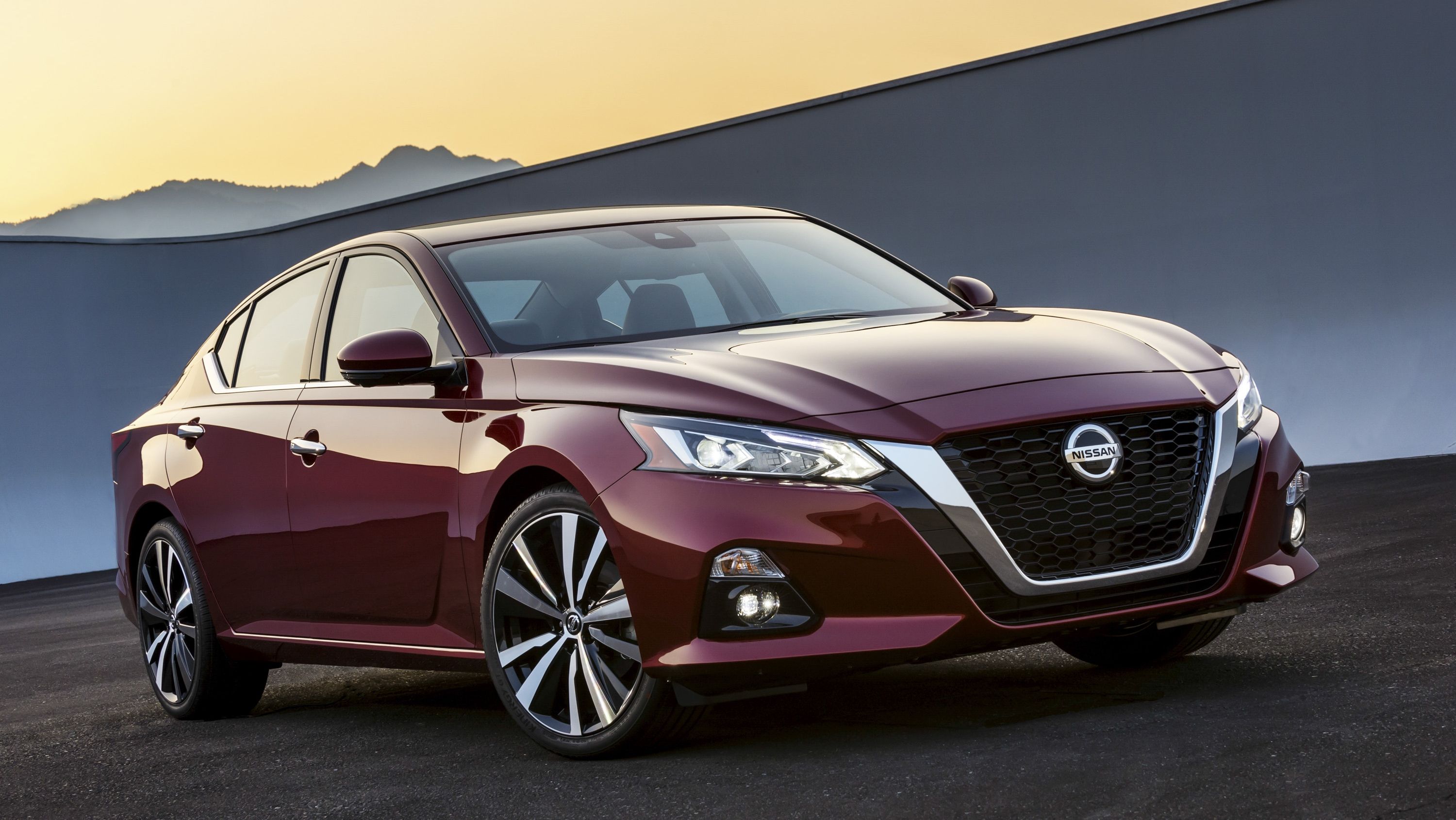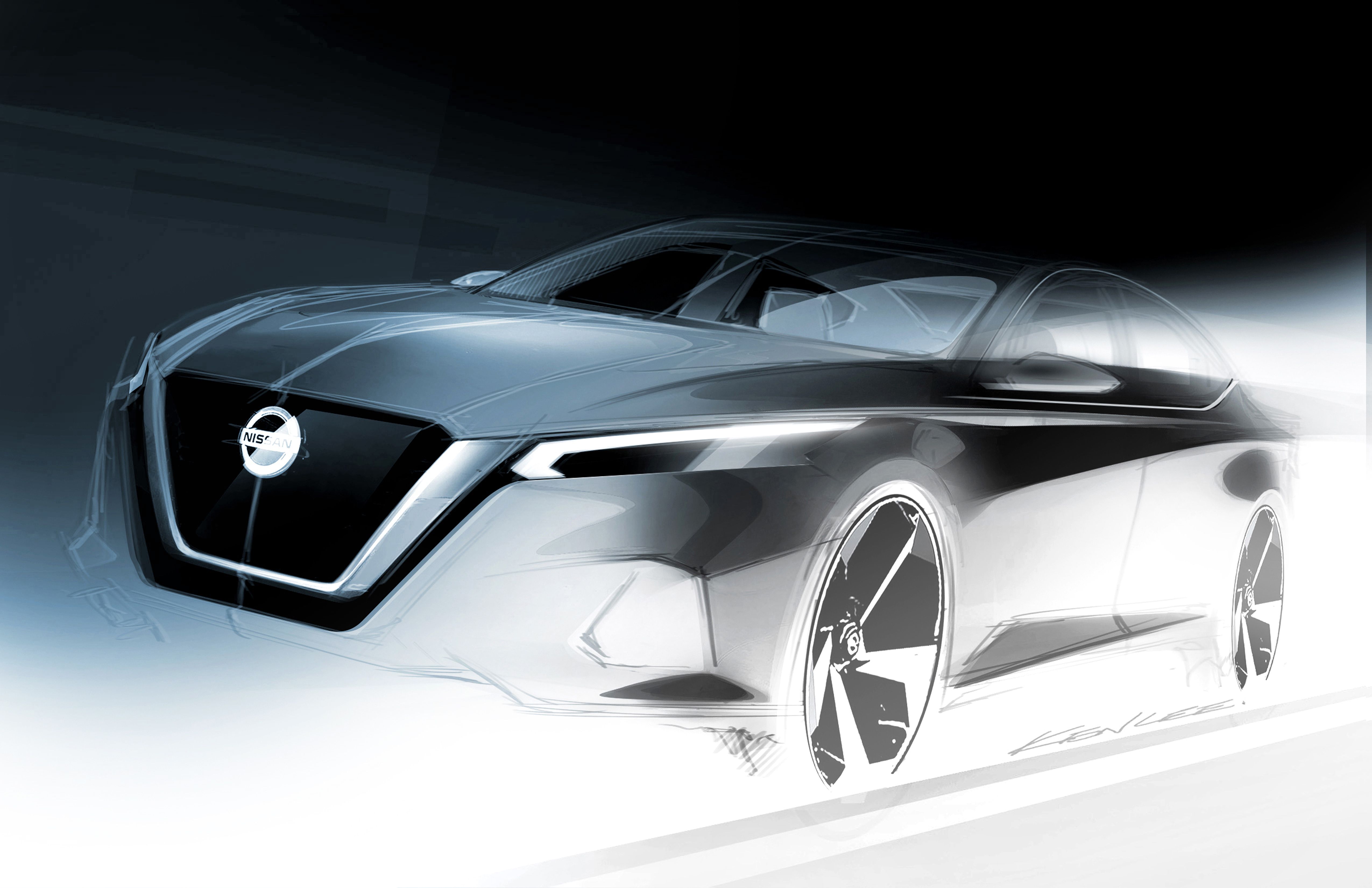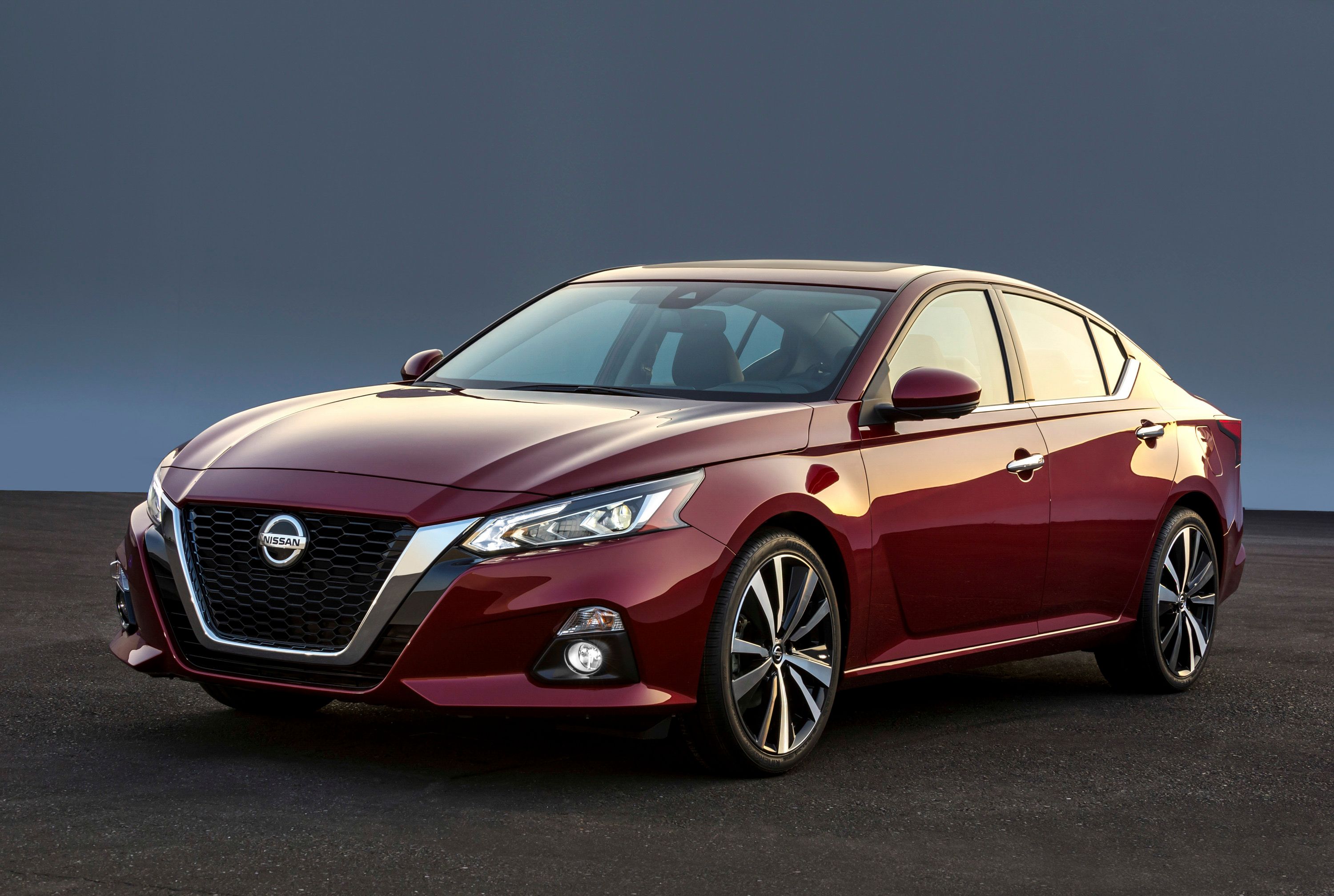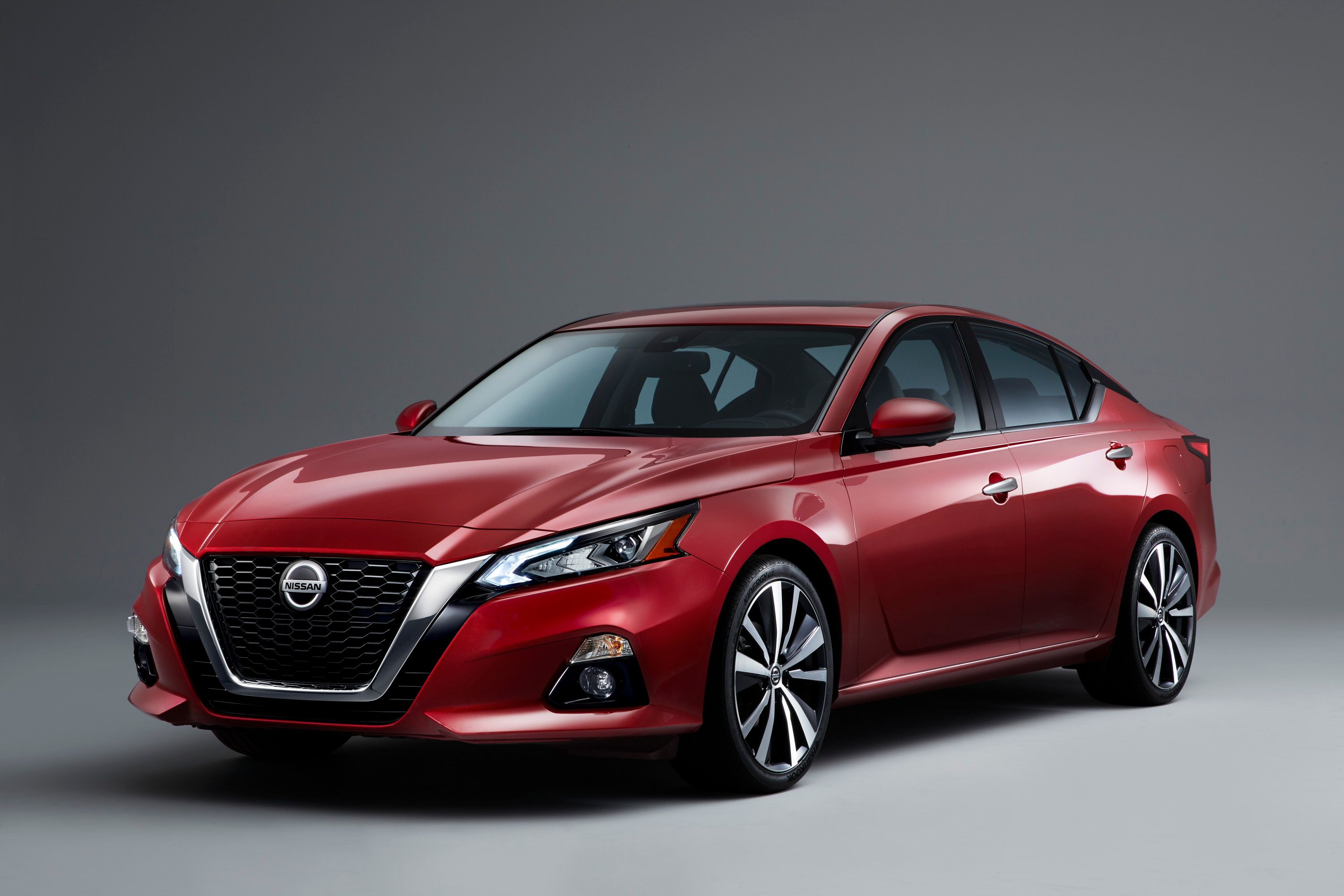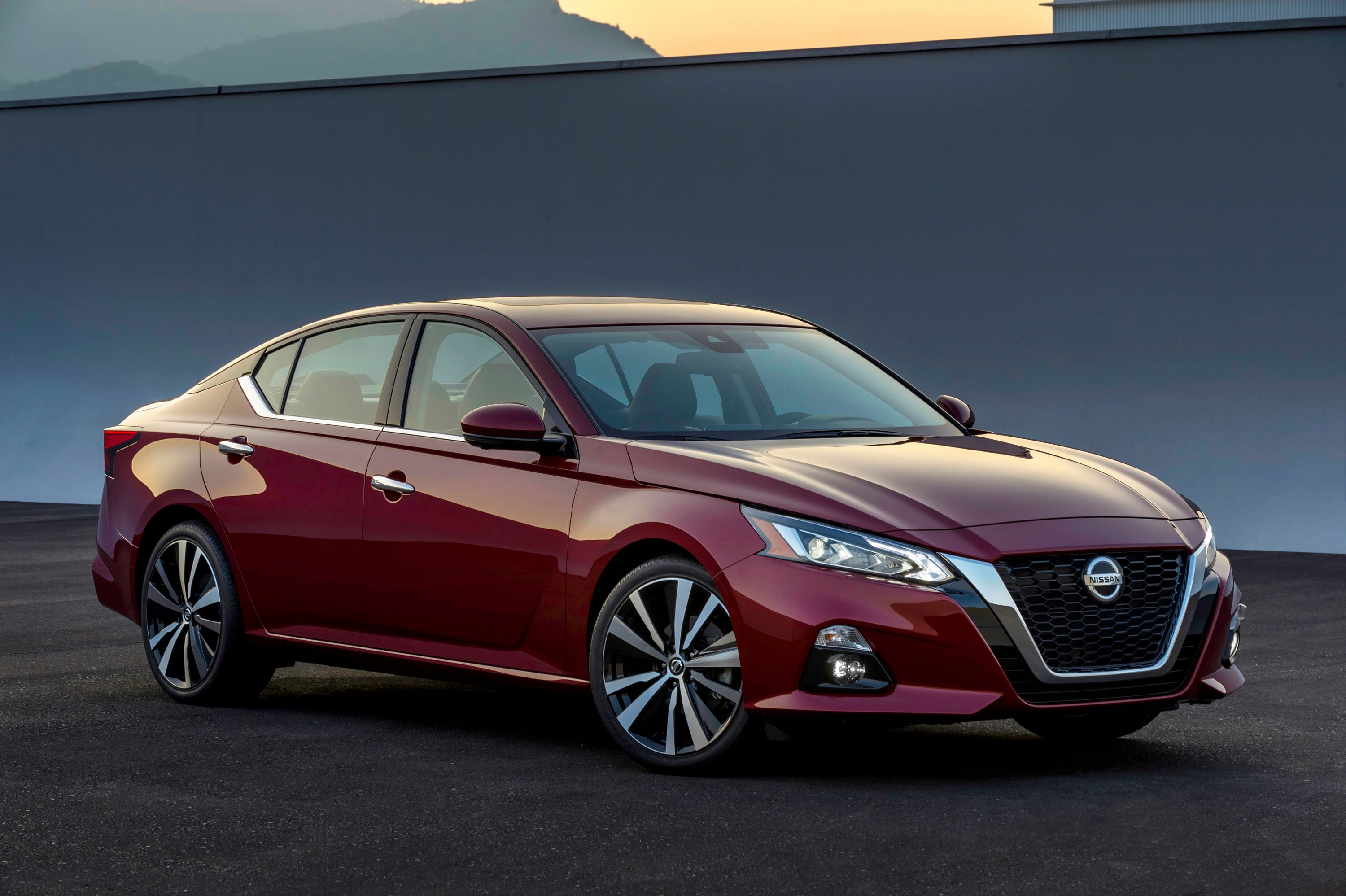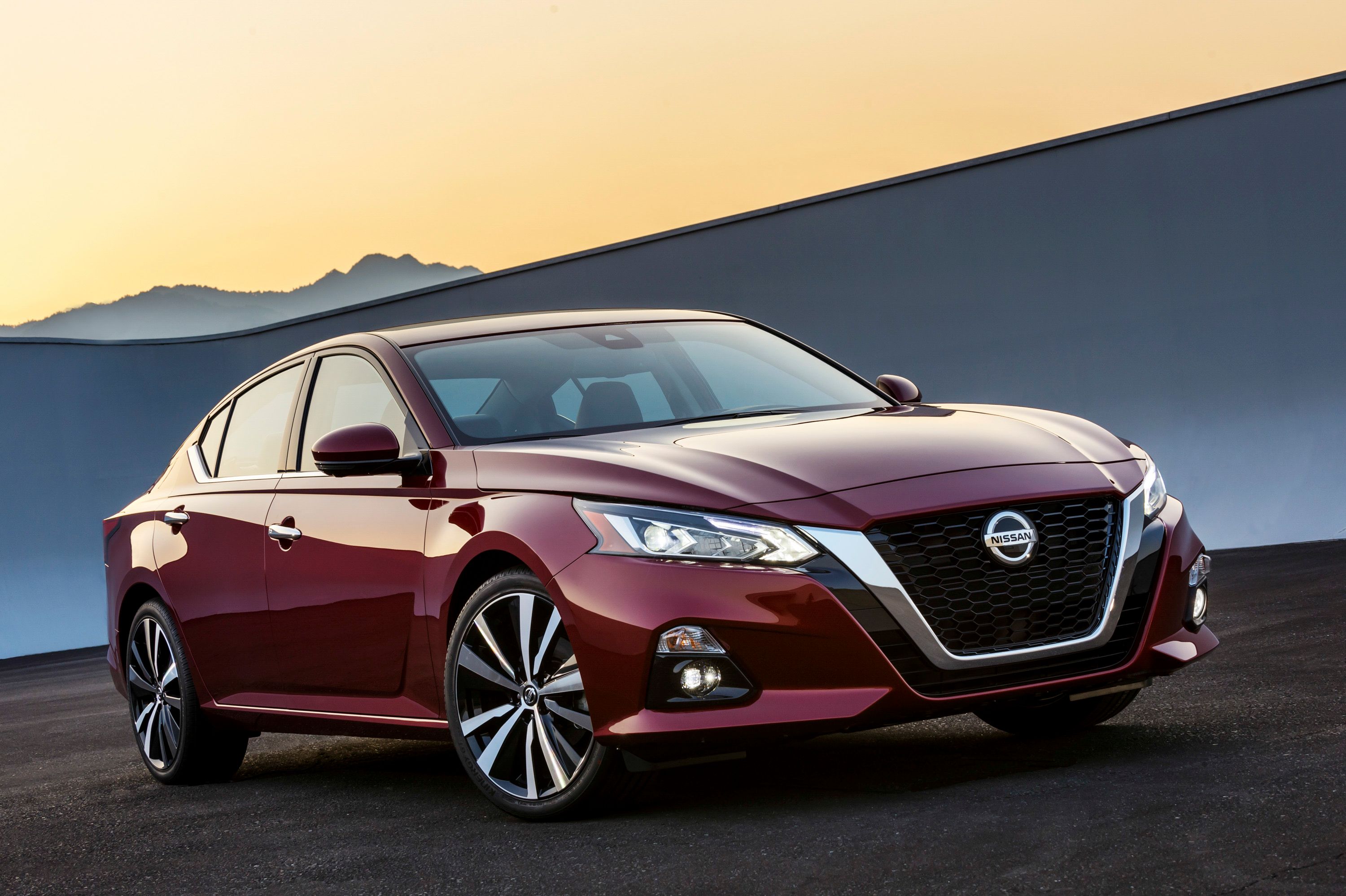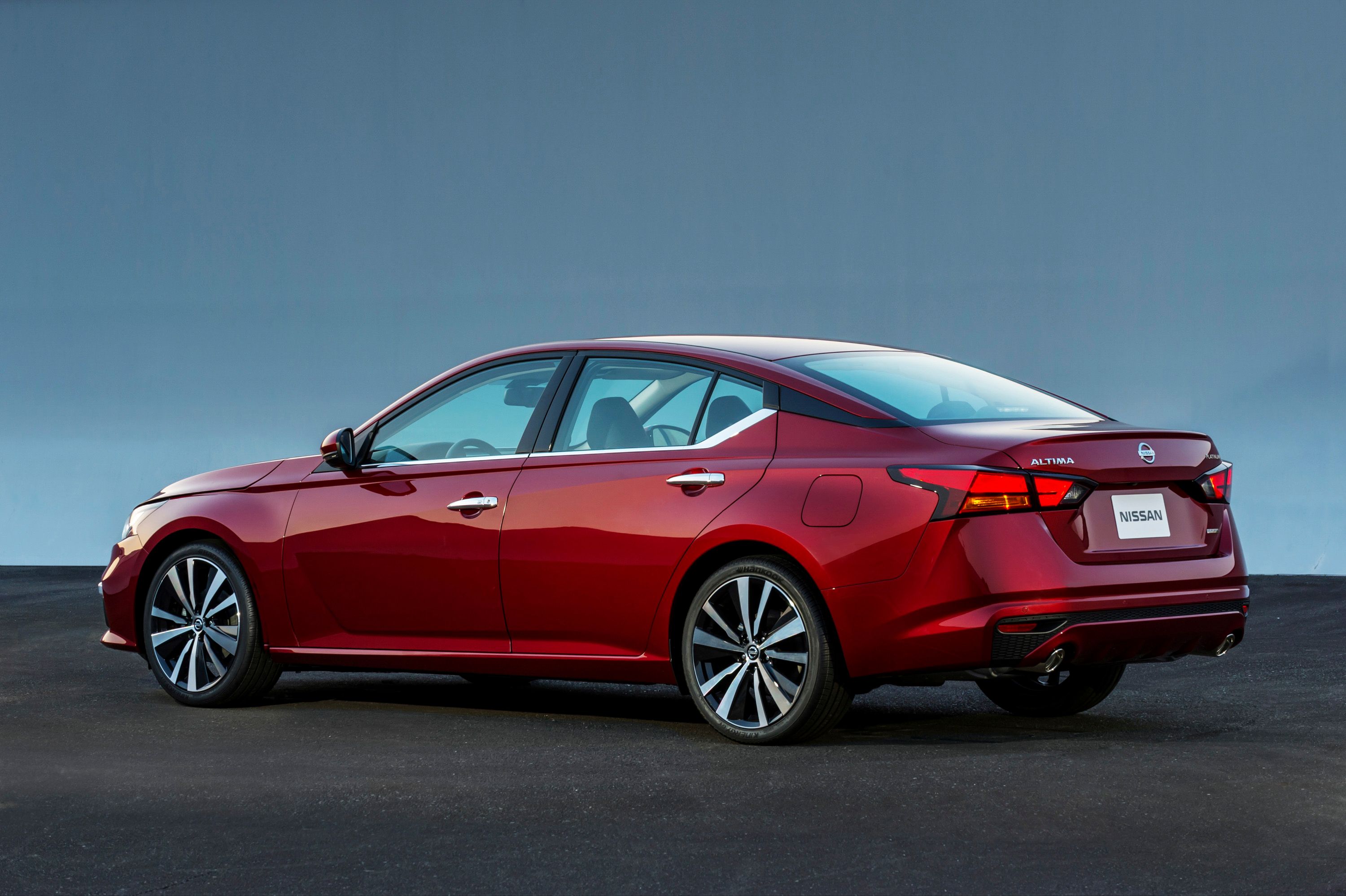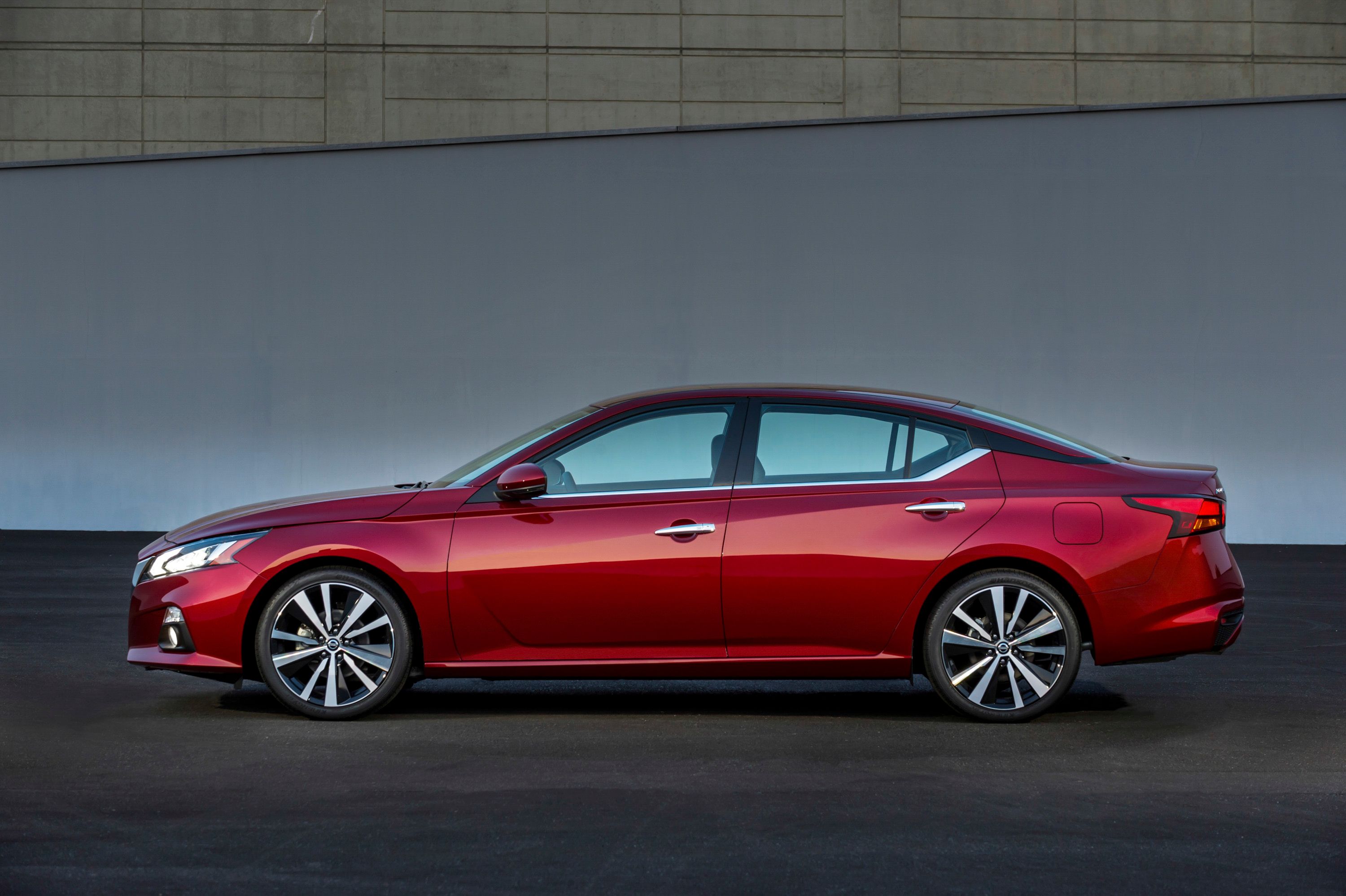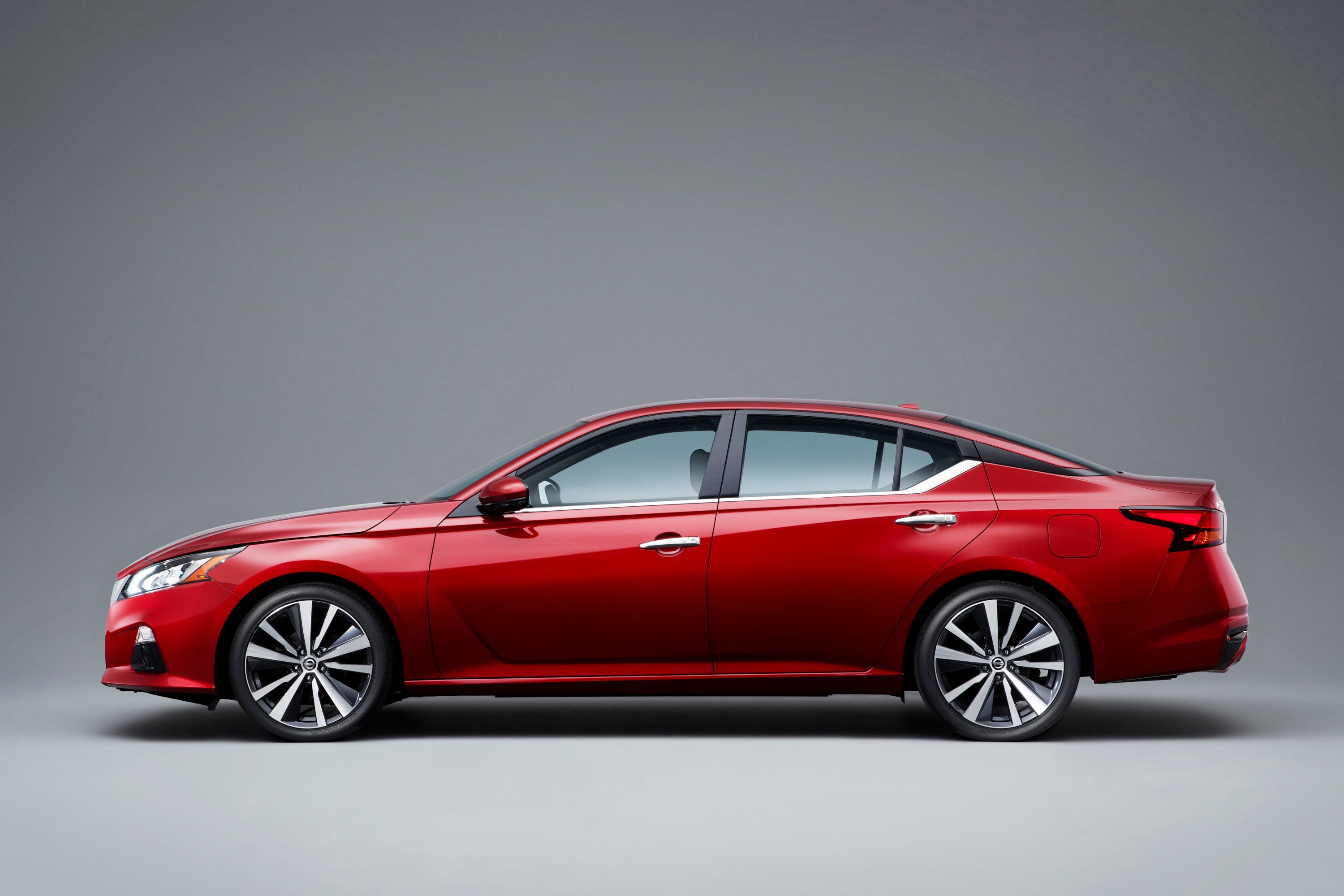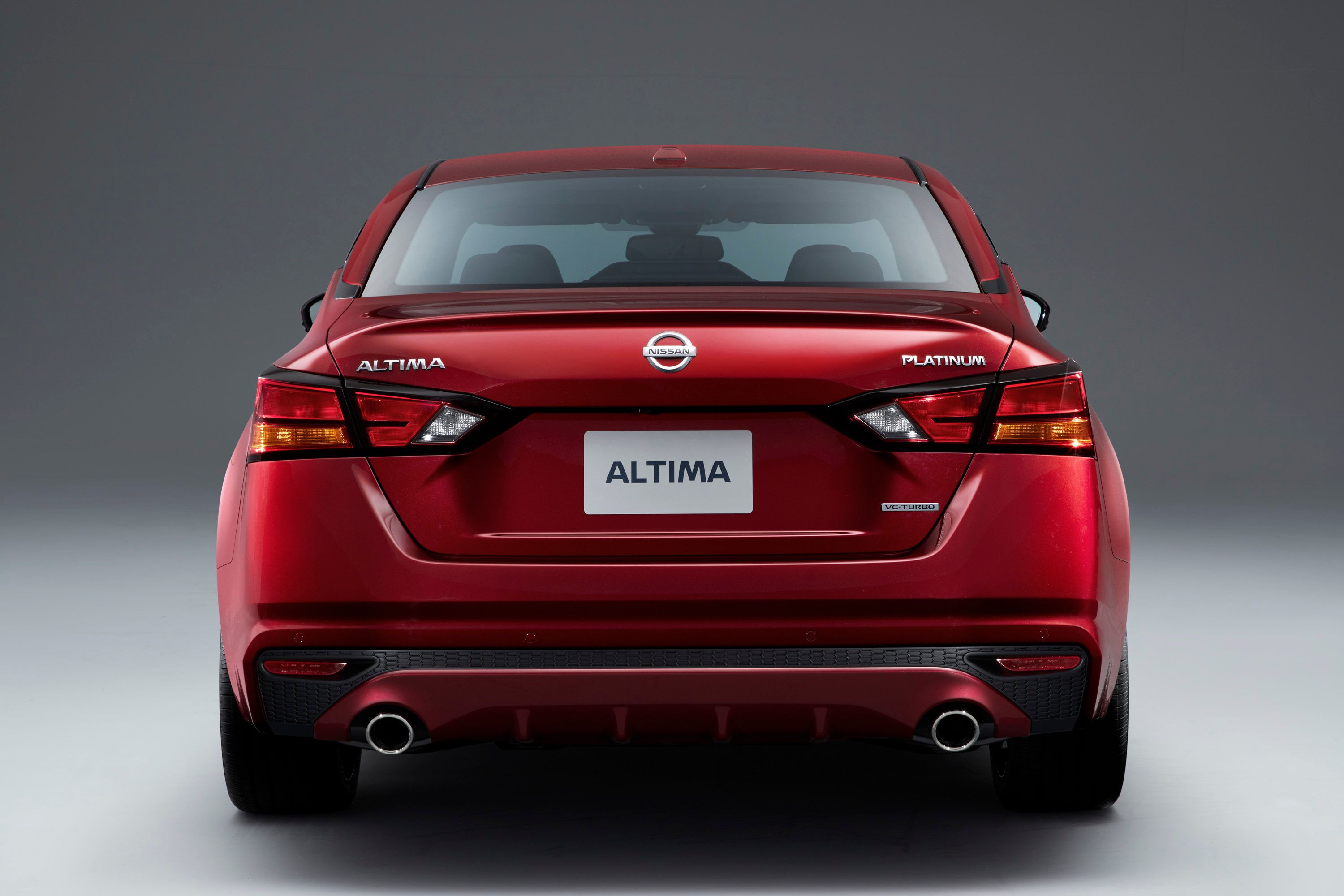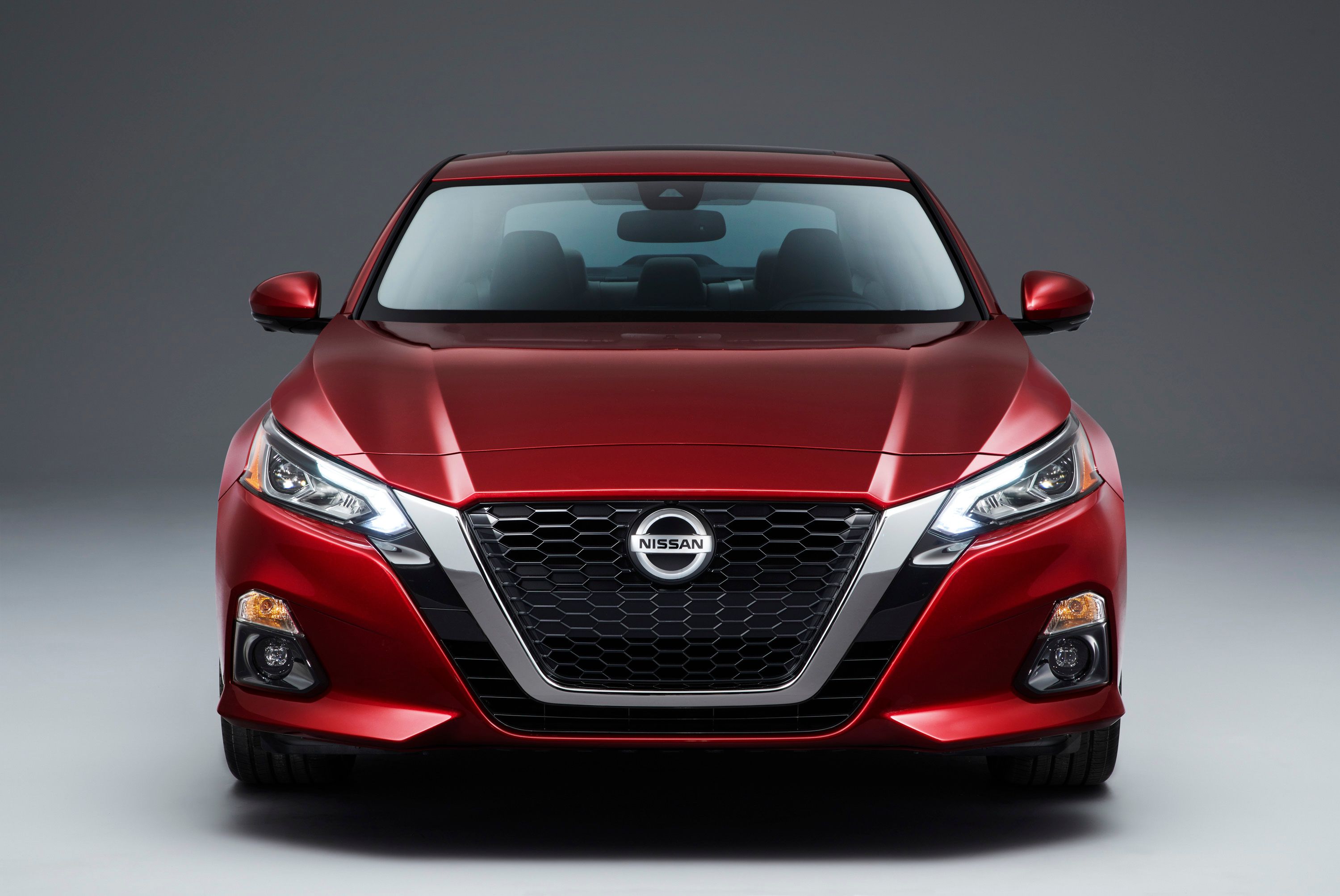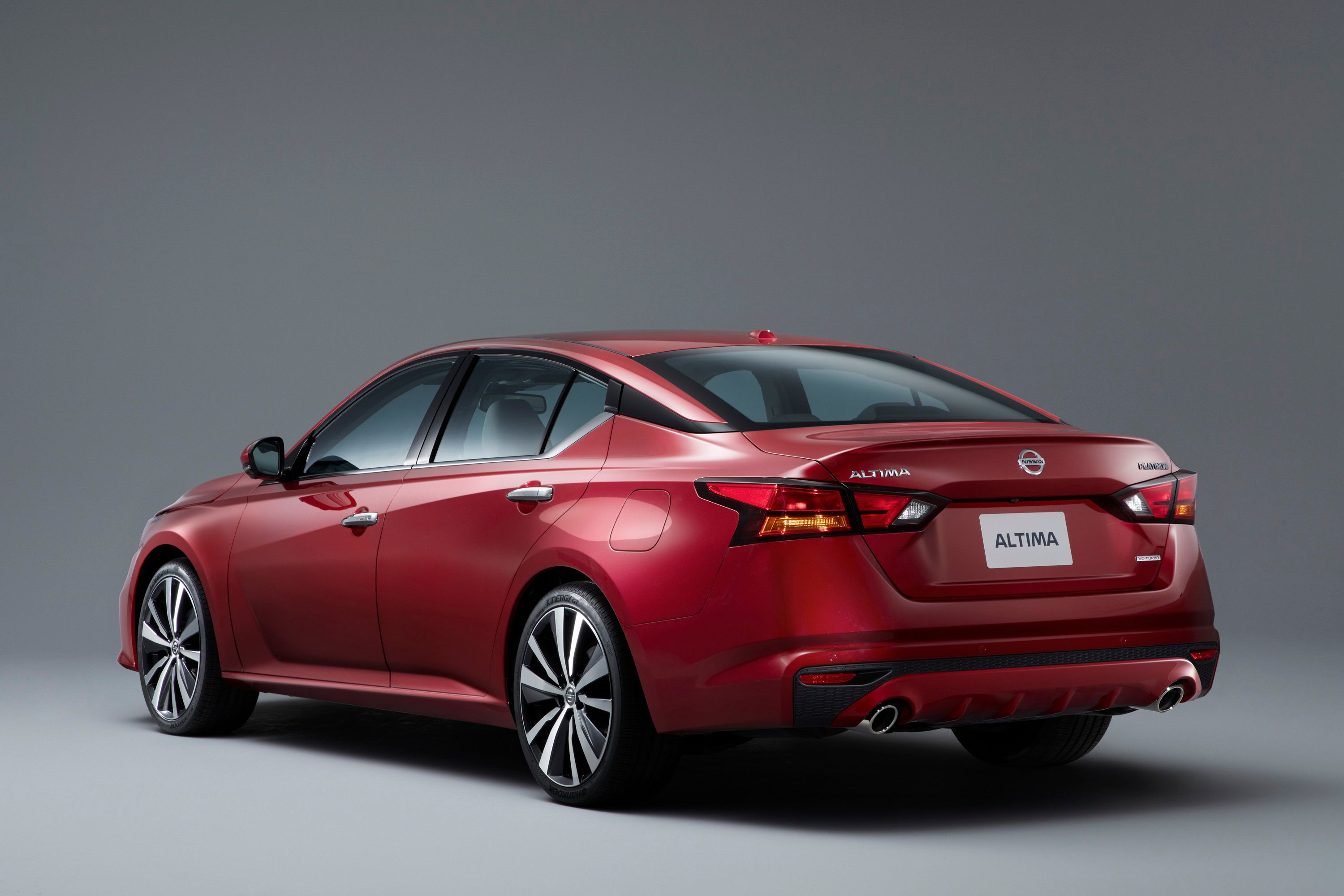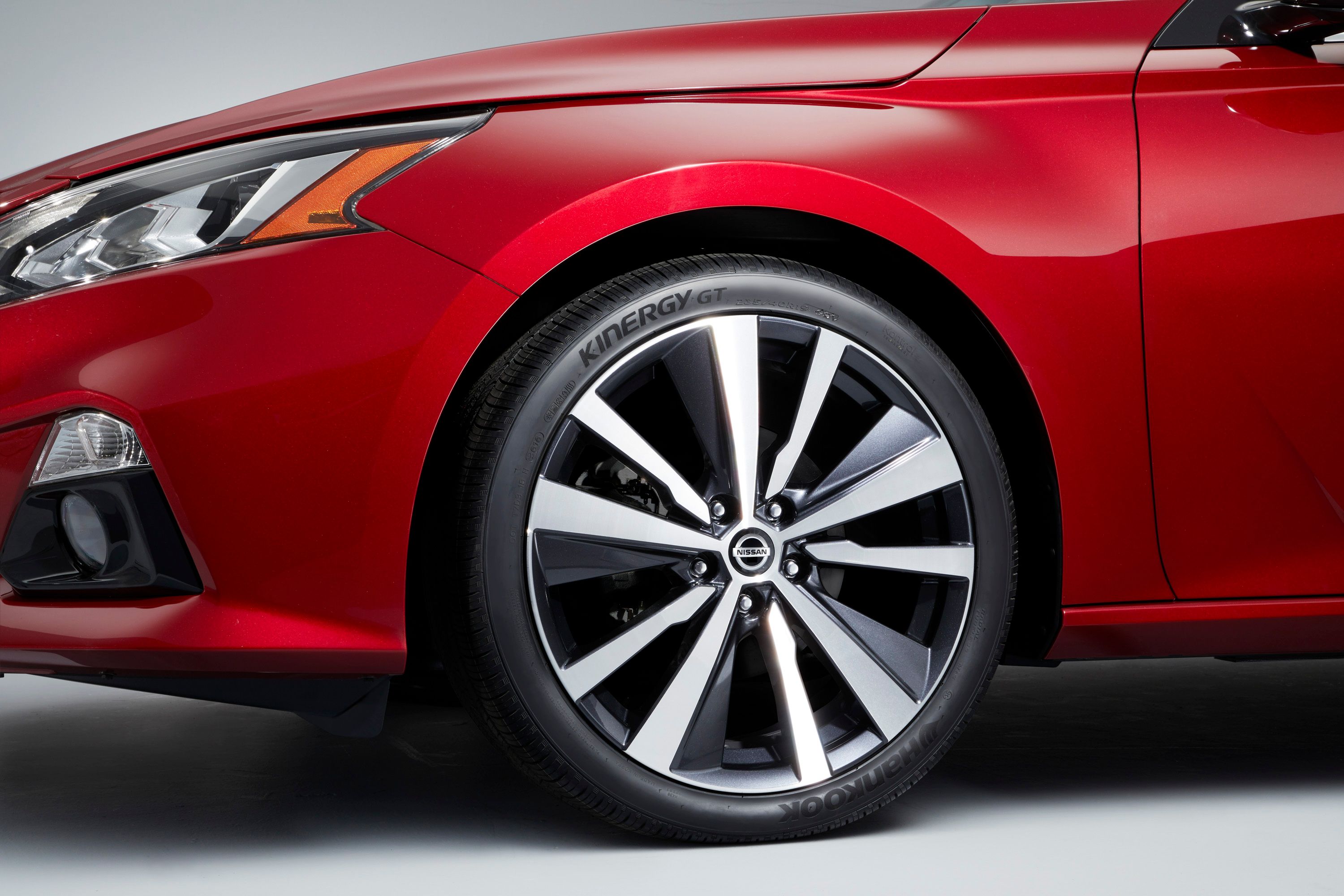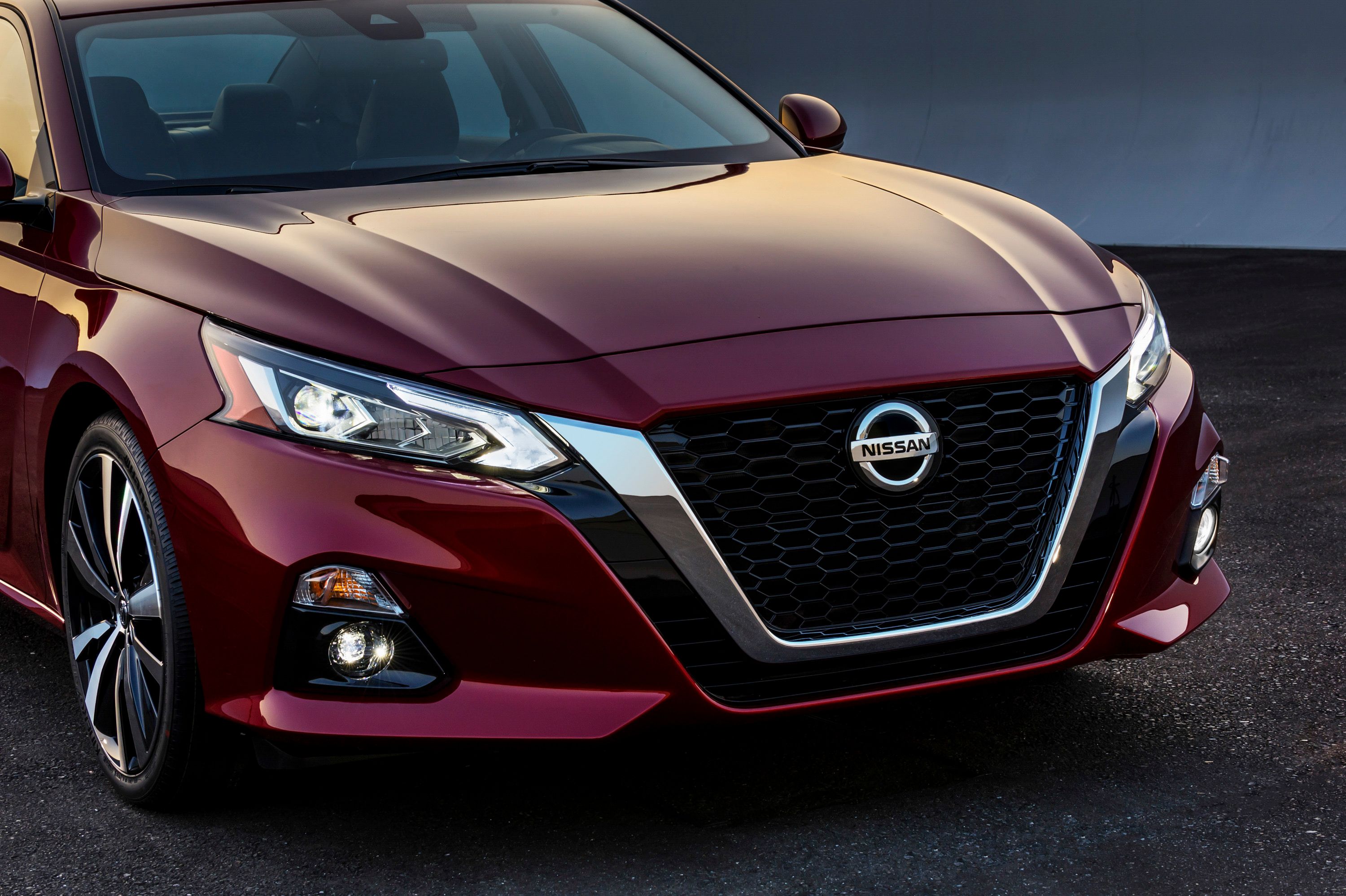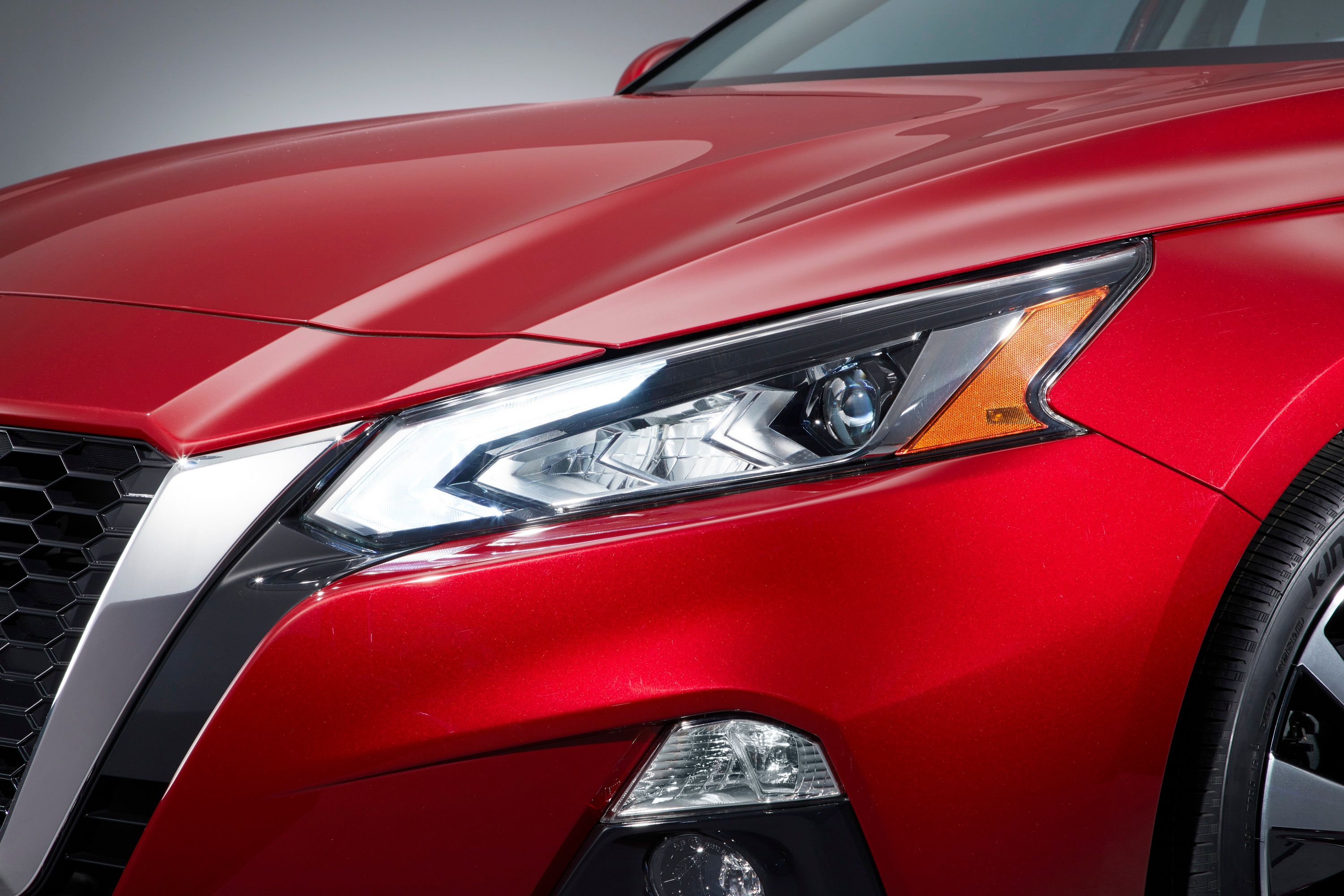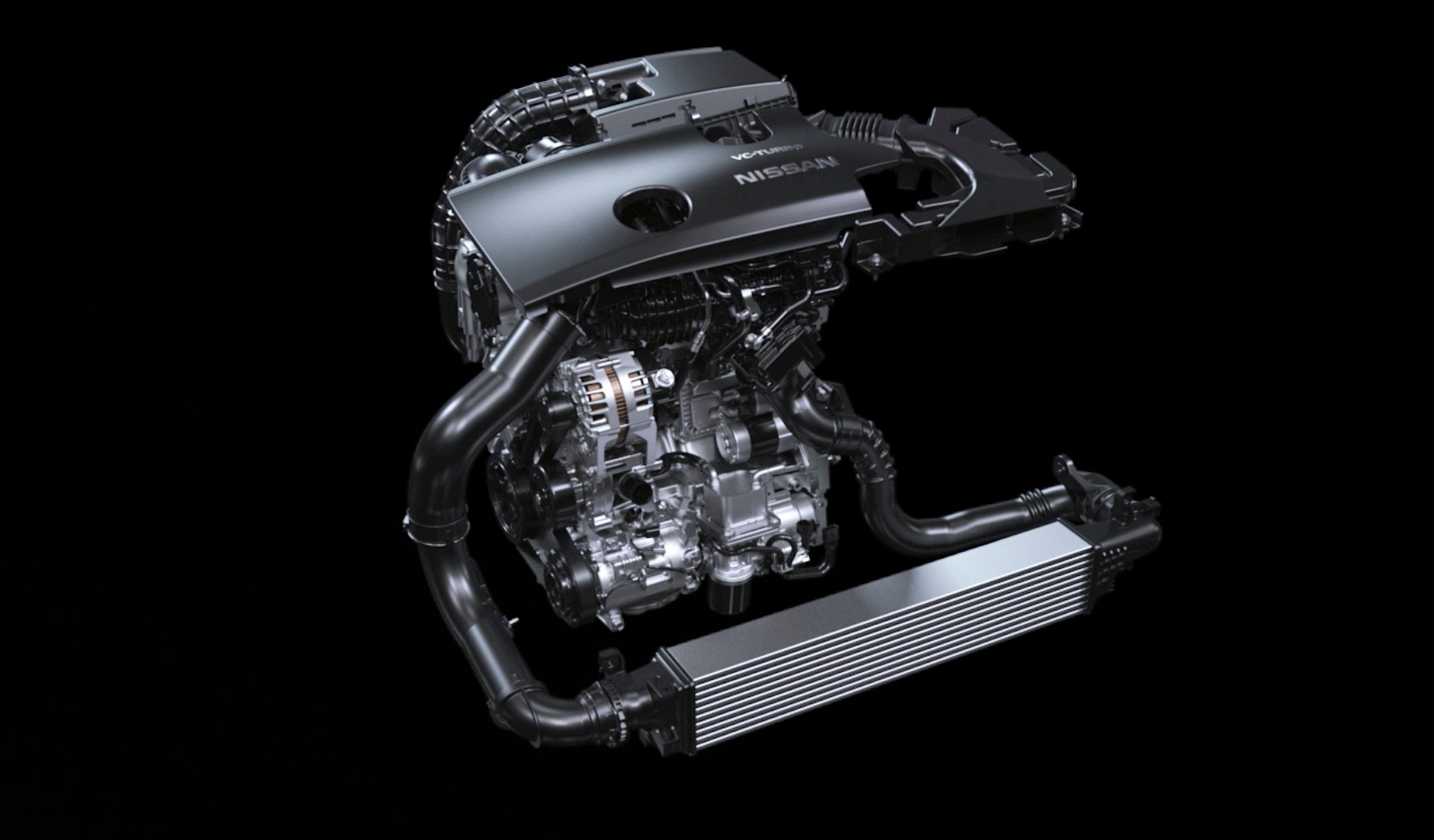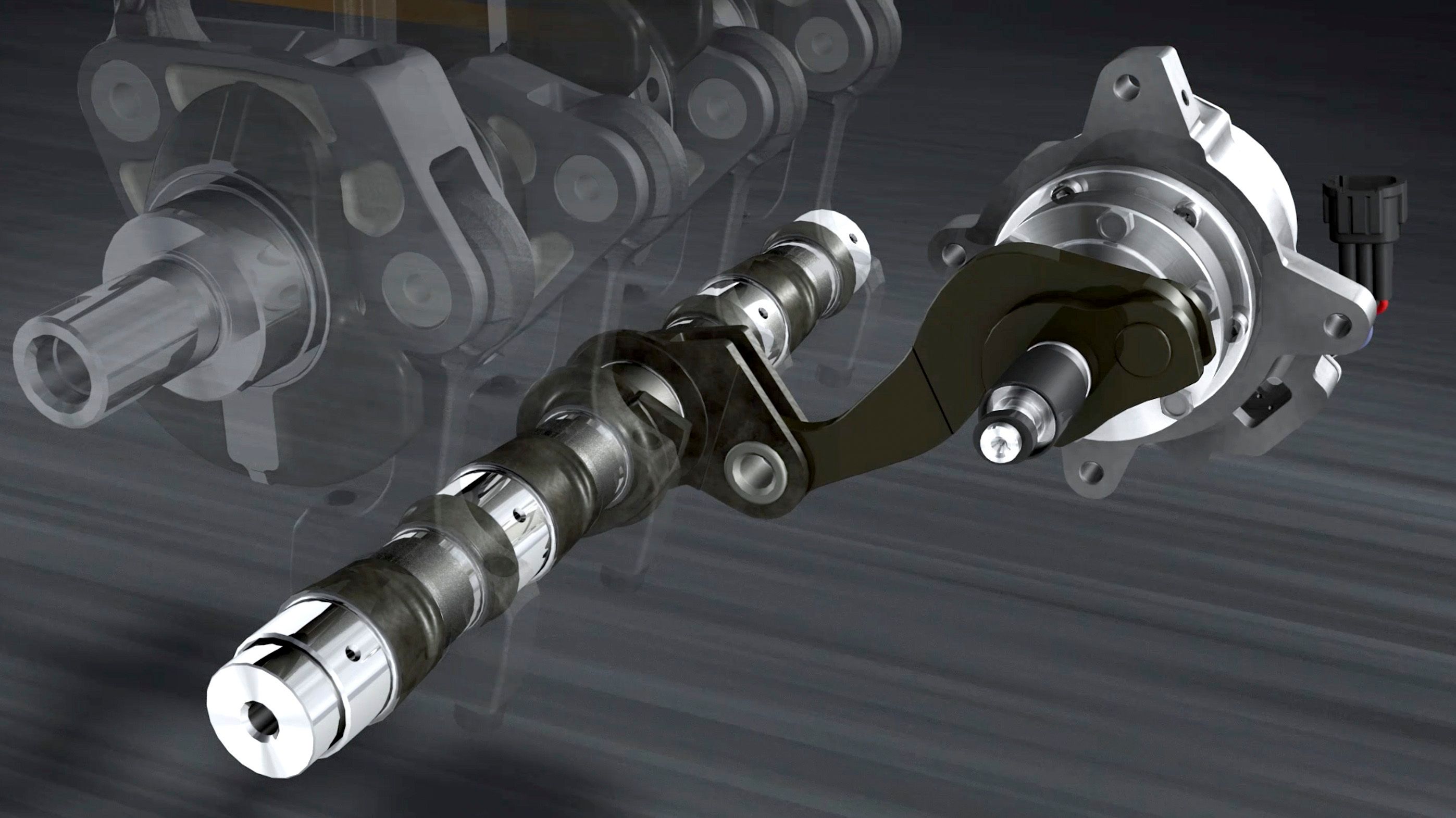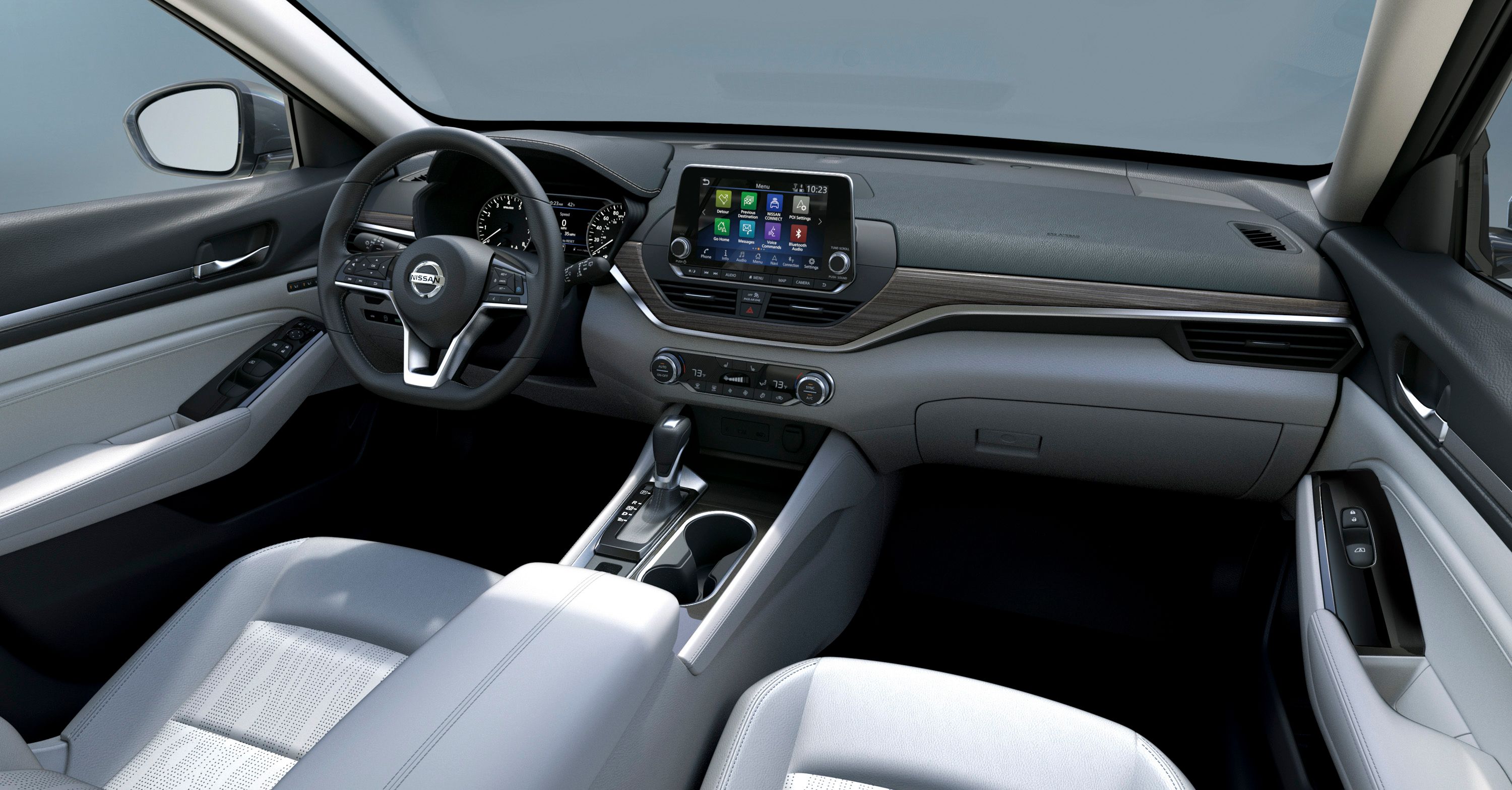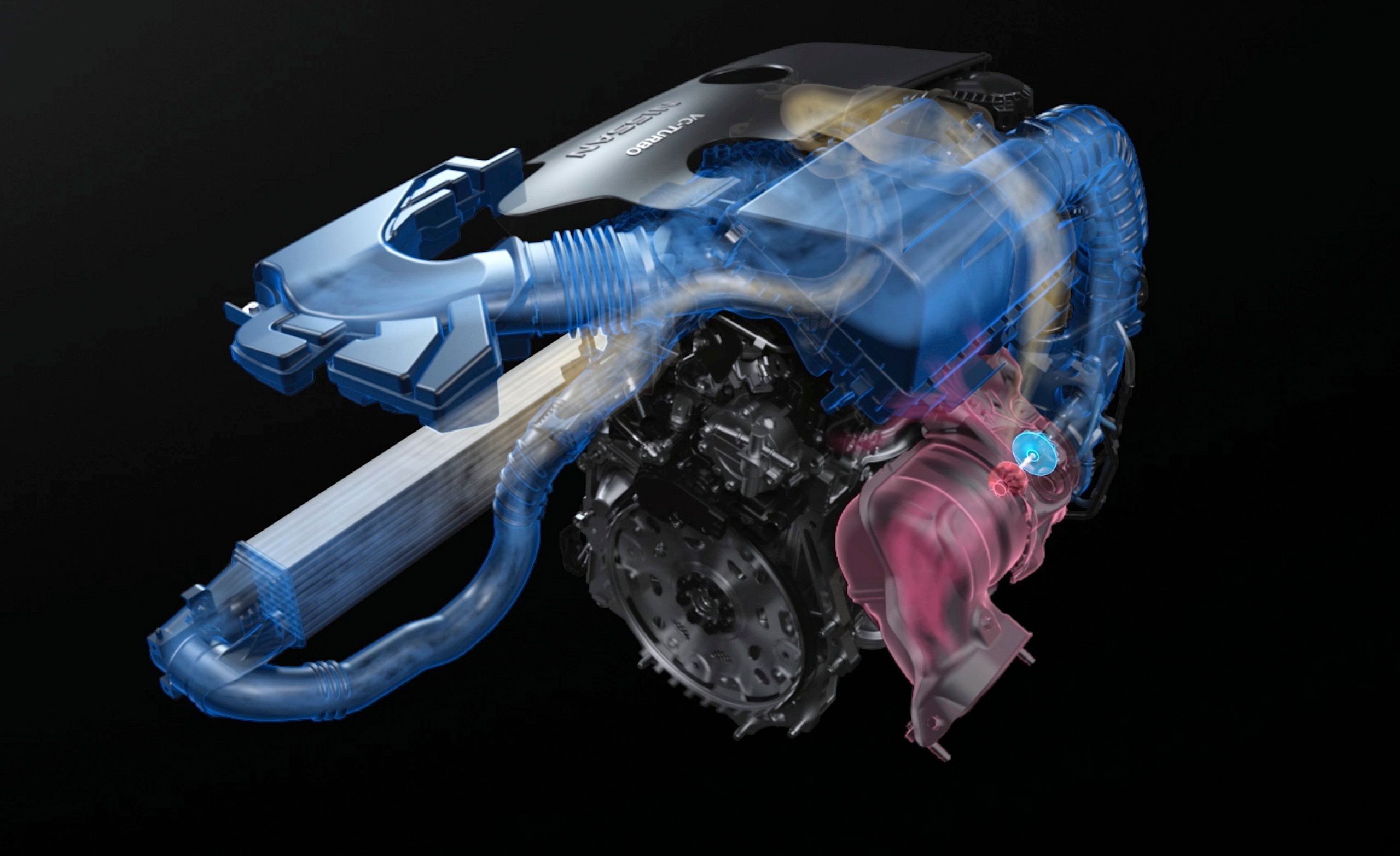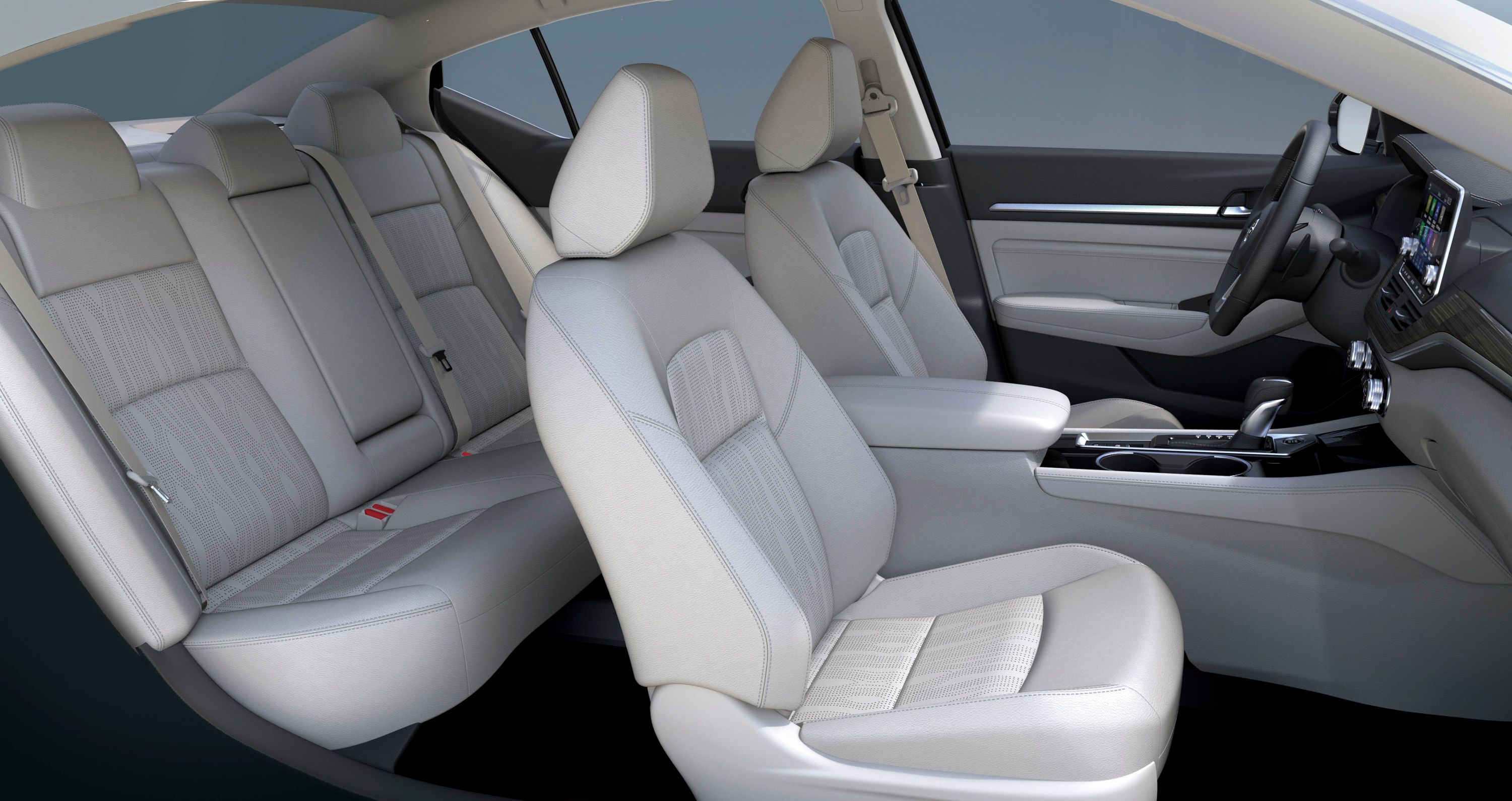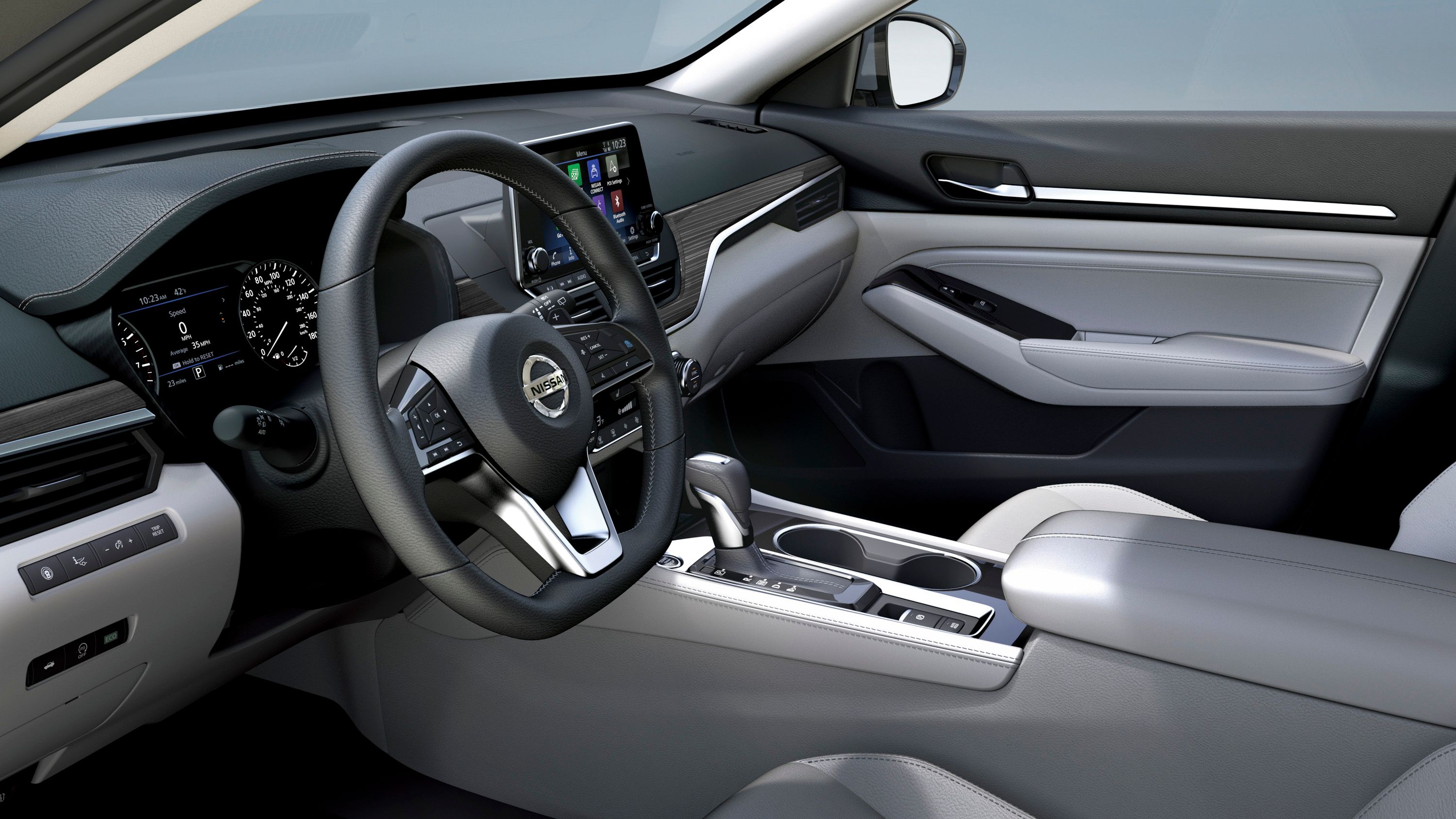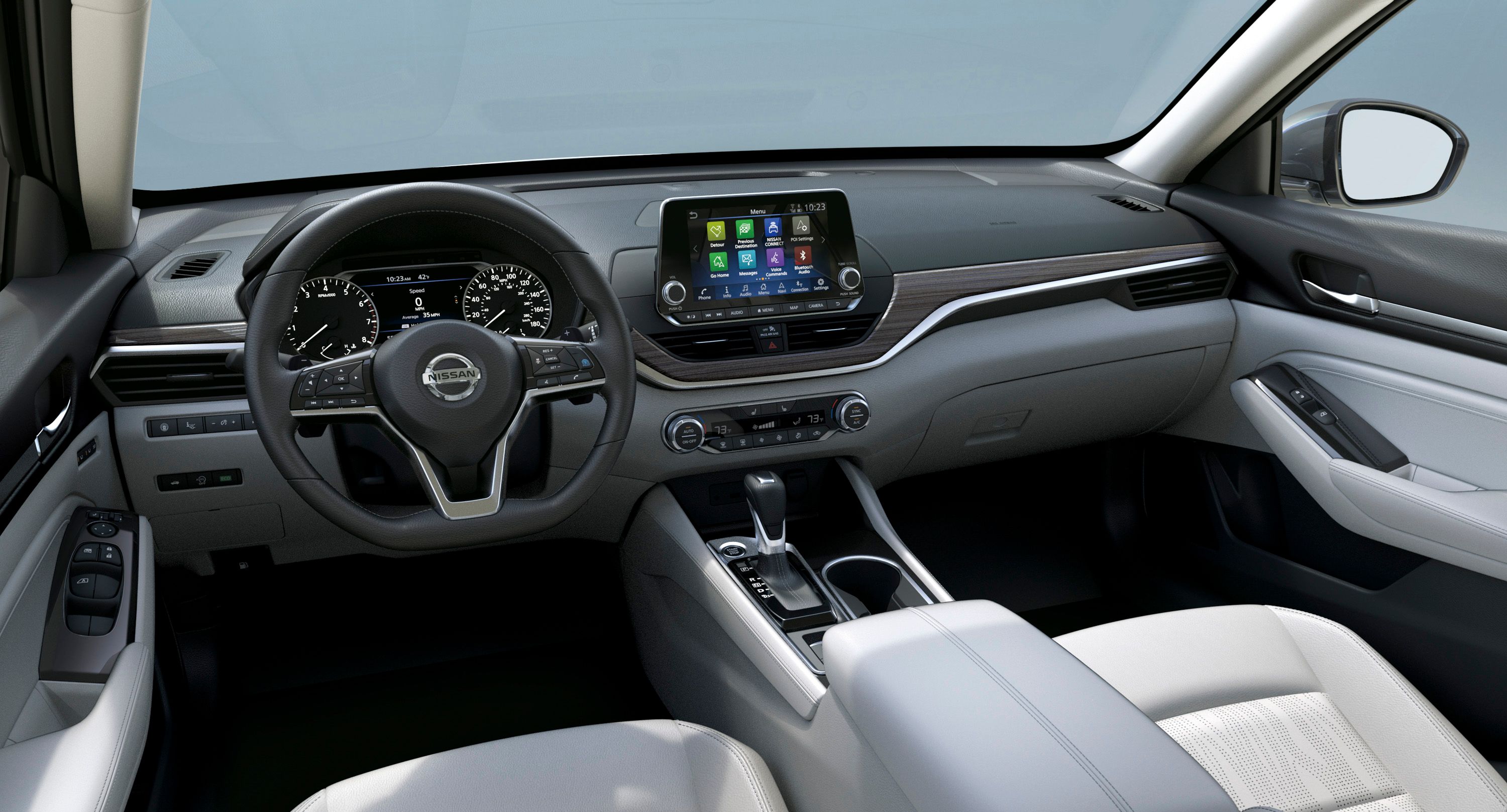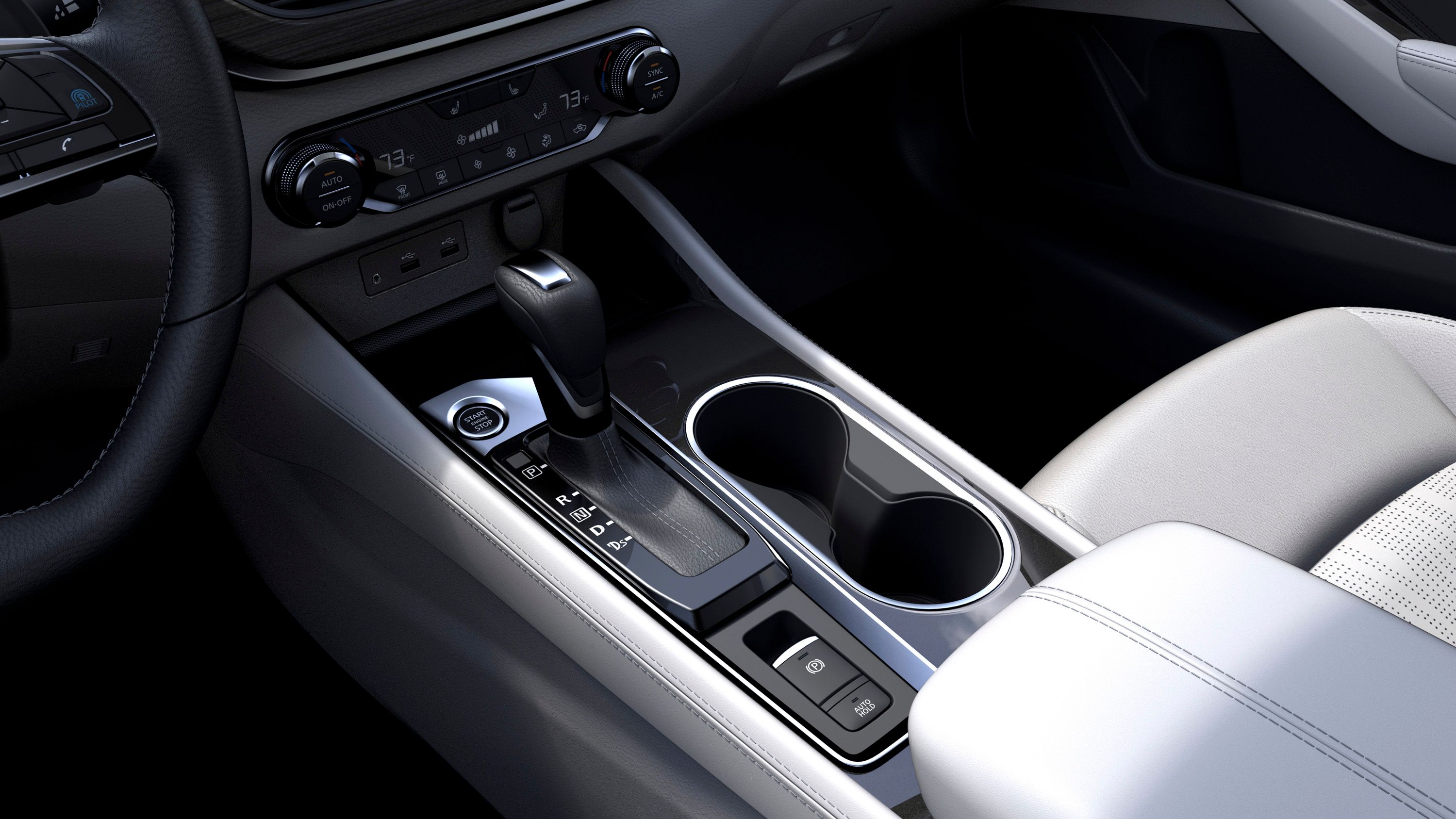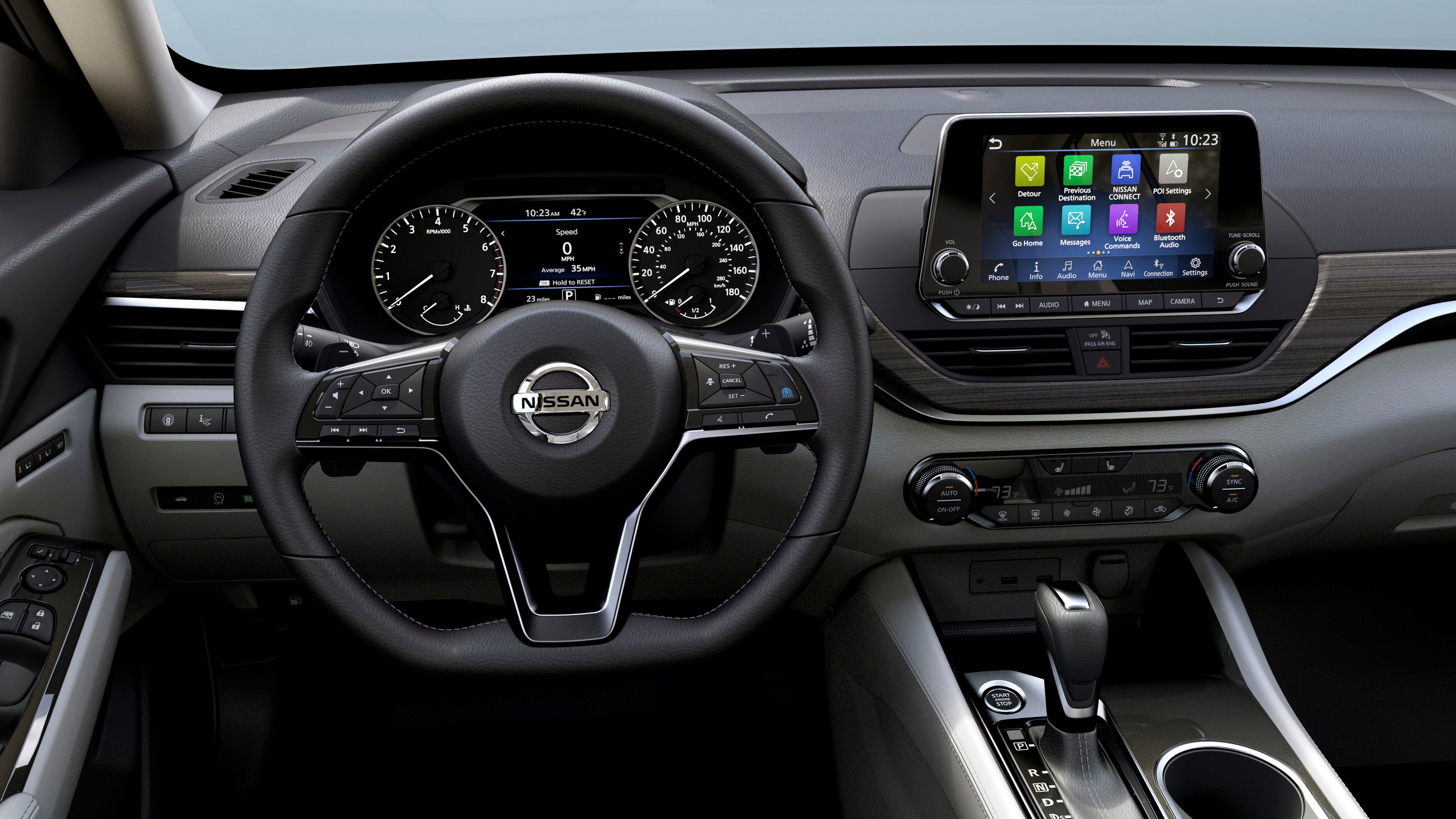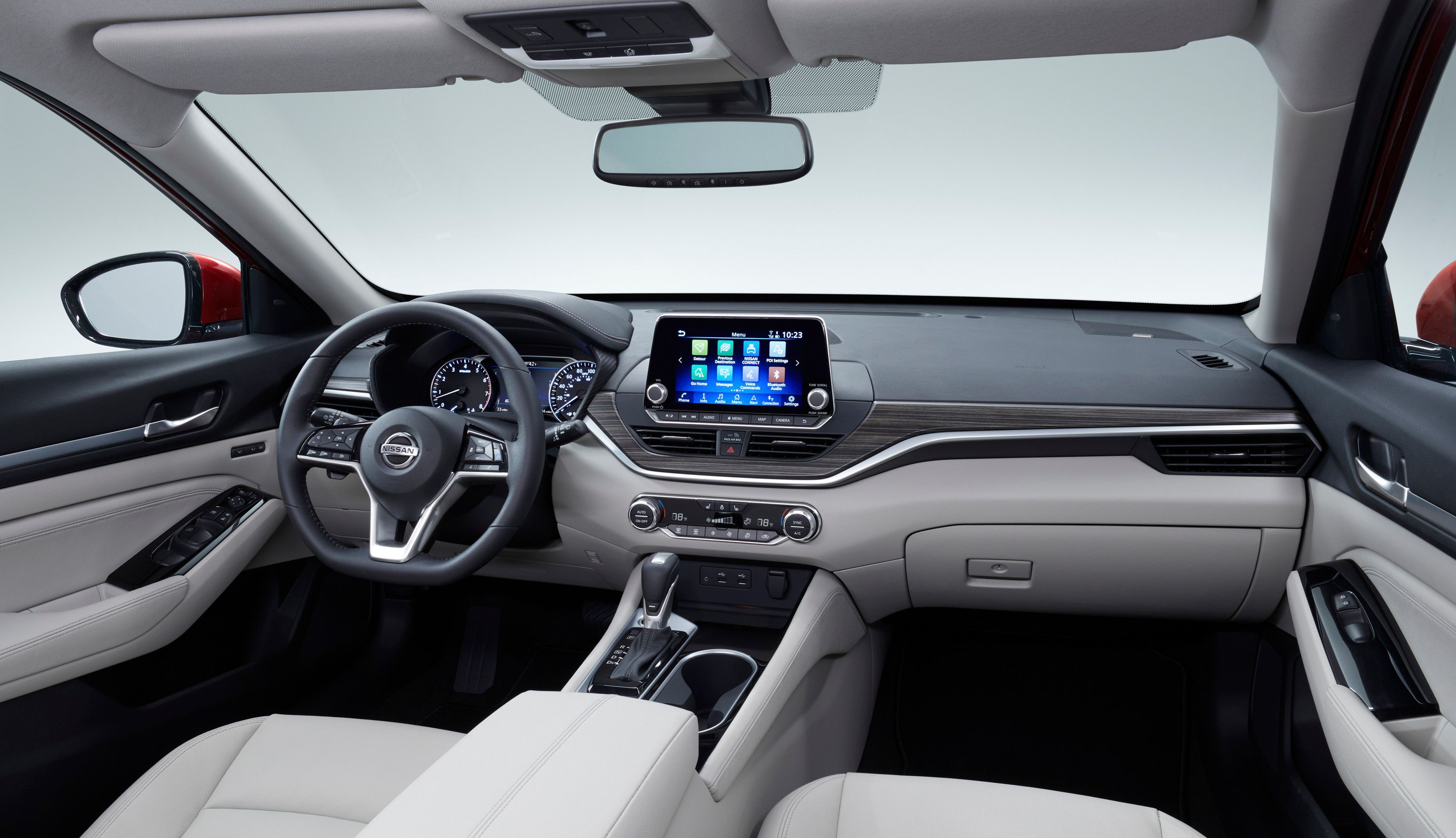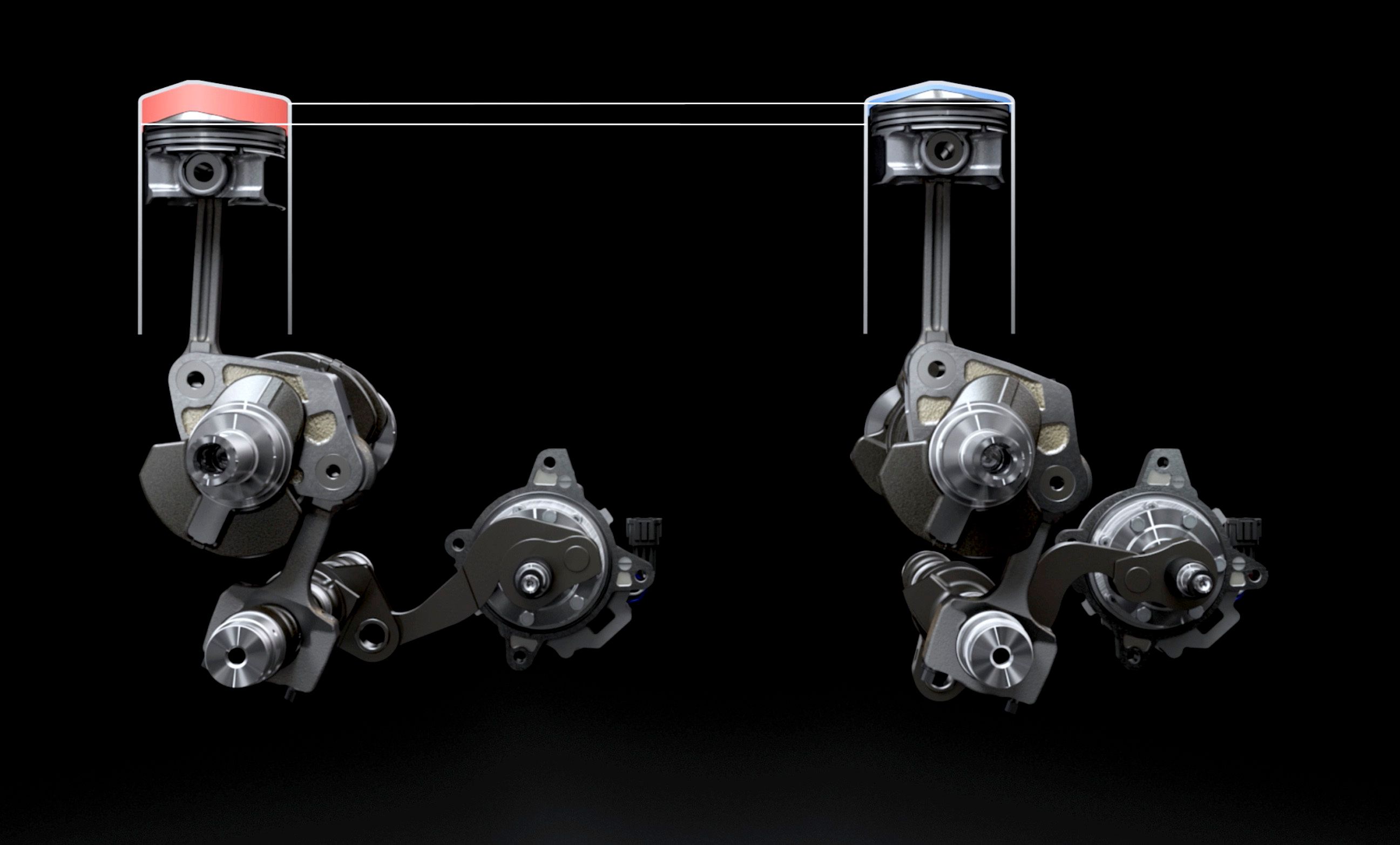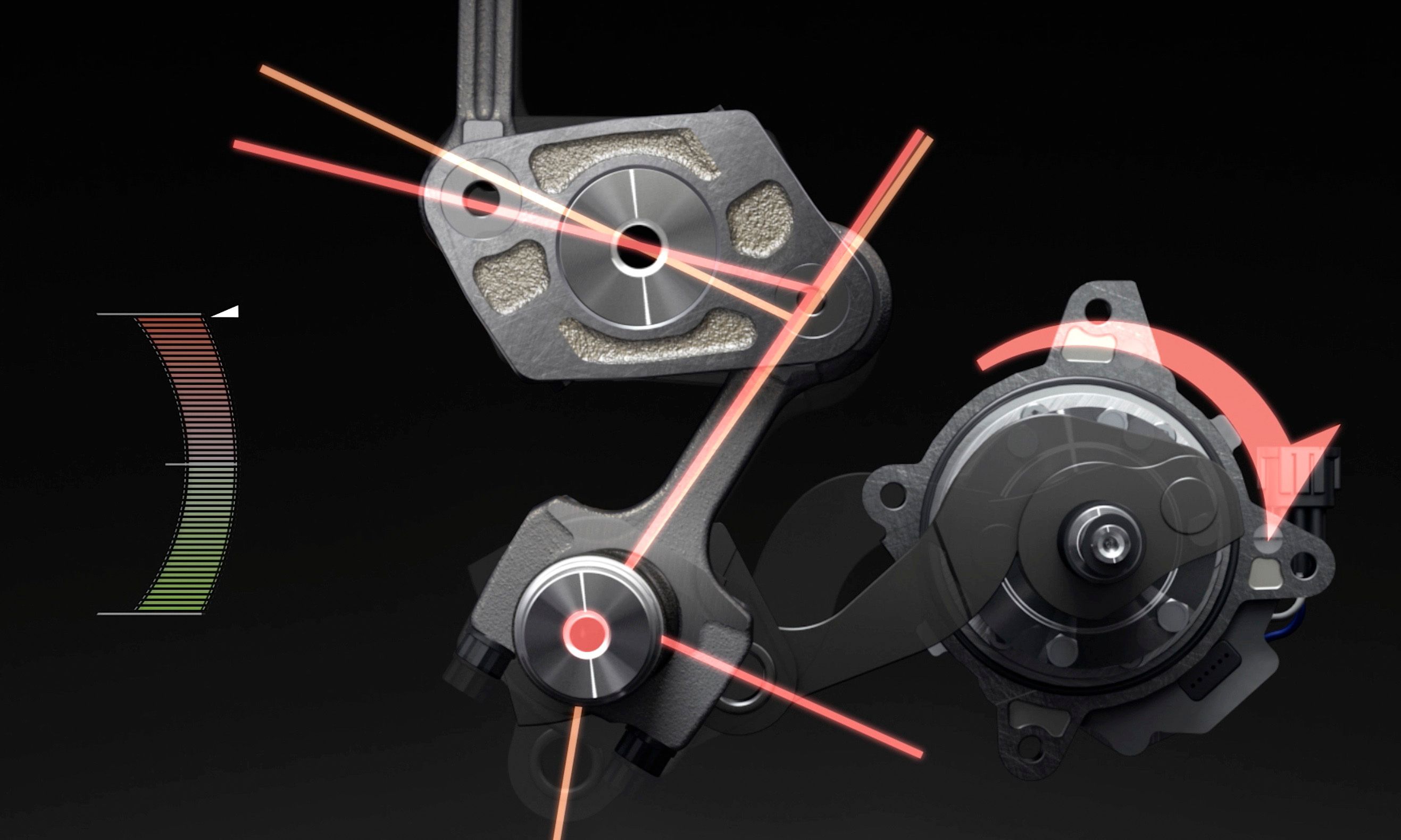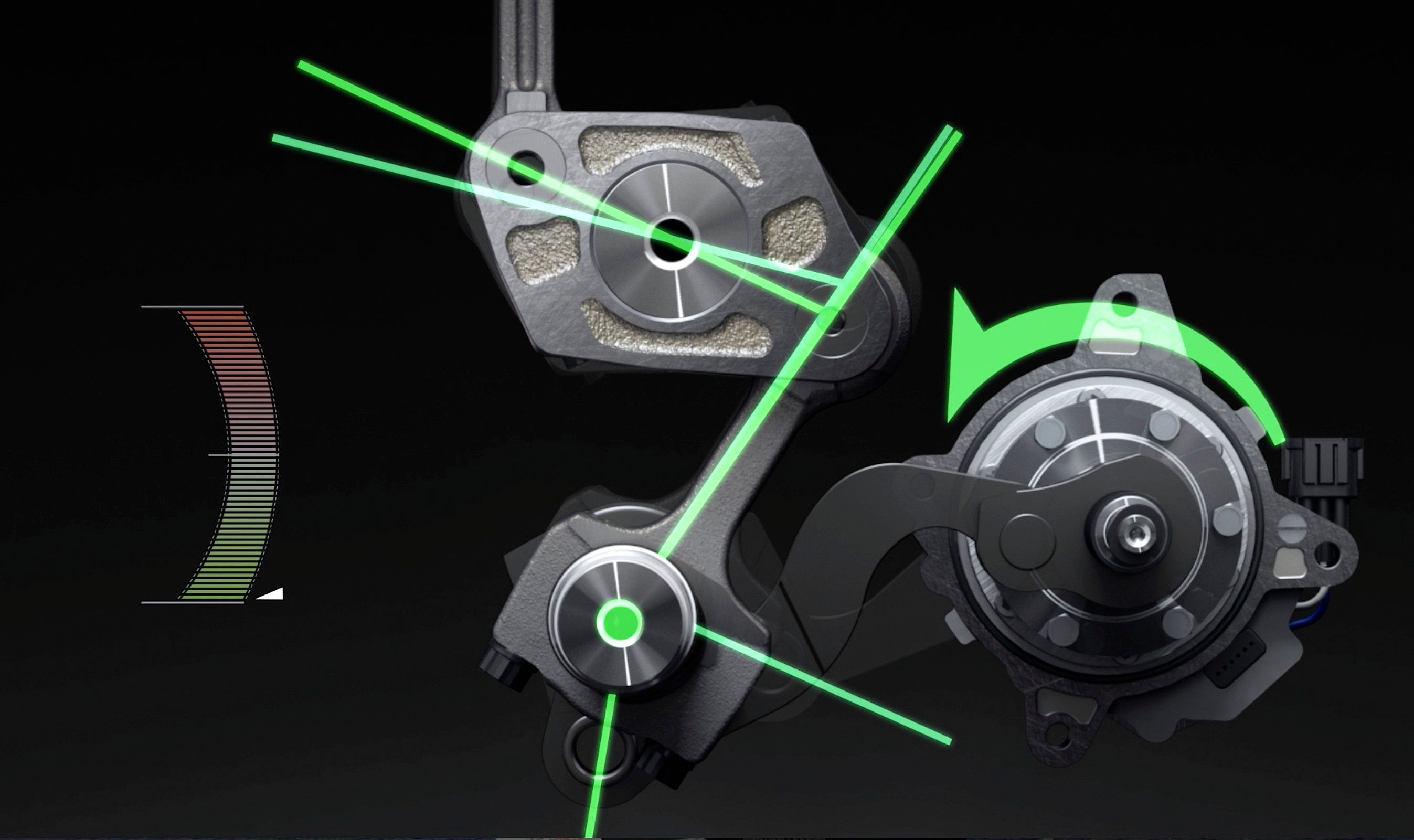The Altima name goes back to the mid-1980s when it was used on a top-trim line of the Nissan Leopard and the Central American version of the Laurel. It became a stand-alone marque in 1992 when it replaced the Stanza in the U.S. Built in Tennessee starting with the 1993 model year; the Altima became one of the brand's most successful vehicles in North America. To meet the high demand, Nissan is now building the sedan in two U.S. plants. With annual sales of more than 250,000 units during the past seven years, the fifth-generation is by far the most successful version of the Altima. But the existing sedan is being phased for the 2019 model year, replaced with a new model that broke cover at the 2018 New York Auto Show.
Redesigned from the ground up, the sixth-generation Altima employs a new design language based on the Vmotion 2.0 concept car from 2017. The redesign also introduced a new interior with more premium features, new technology, and, for the first time in this segment, semi-autonomous drive. Things get even better under the hood, where the Altima gained not only a revised version of the 2.5-liter four-cylinder but also a brand-new, turbocharged four-banger. The latter replaces the old 3.5-liter V-6. Surprisingly enough, the new turbo-four is the variable compression ratio unit that Nissan debuted under the Infiniti brand. Overall, the sixth-generation Altima is the most advanced sedan in this market, but we will find out more about that in the review below.
Continue reading to learn more about the Nissan Altima.
2019 Nissan Altima
- Make: Array
- Model: 2019 Nissan Altima
- [do not use] Vehicle Model: Array
2019 Nissan Altima Exterior
The new Altima is inspired by the Vmotion 2.0 concept that Nissan showcased at the 2017 Detroit Auto Show. And by "inspired" I don't mean just a few design cues. The sixth-gen sedan is actually heavily based on the concept vehicle, significantly more than you'd expect from a production model. Remember how the current Maxima shared many styling cues with the Sport Sedan concept when it arrived in 2015? The scenario is identical here, which proves that Nissan means business and that it's willing to put some of its concept cars in production without too many radical changes.
Up front, similarities begin with the large V-shaped grille flanked by thick chrome trim on the sides and below. The element is almost identical to the concept car's as far as shape and size go, but it features a finer honeycomb mesh finished in black rather than dark chrome. The production model also gained the gloss black trim around the chrome surrounds, which turns into a grille in the apron area.
The headlamps aren't as sleek as the concept's, but they're definitely sportier compared to the old Altima. Thankfully, Nissan ditched the awkward boomerang shape for the new generation. The bumper was also reshaped, but the aggressive side vents of the concept car were replaced with more mundane openings that include round foglamps and trapezoidal daytime running lights. The hood remained somewhat similar, sporting muscular lines and sharp edges.
The Altima's new profile is quite athletic thanks to a character line that moves upward toward the rear to create muscular haunches. Yet another features borrowed from the Vmotion 2.0. While the pillarless design was dropped, the production model boasts the same thick C-pillar and coupe-shaped roofline. Fine details like the sculpted side skirt area, the almost invisible character line that runs through the door handles, and the way the taillights blend in with the rear fenders give the new Altima an upscale look.
It's here where we can notice a longer wheelbase. Although the new car is only one inch longer, Nissan managed to add almost two extra inches to the wheelbase by shortening the front and rear overhangs. The new sedan is also almost an inch wider and sits 1.1 inches lower. Nissan also designed new wheels for the Altima, available in three sizes. There's 16-inch rims for the base model, 17-inch for the higher trims, and optional 19-inch rollers. The latter are a premier for the Altima, which didn't get wheels this big until now. And it's a rare feature in this segment too.
The rear section also has a hint of Vmotion 2.0, but it's also somewhat evolutionary, sporting many features seen on the previous model. Except for the trapezoidal license plate recess and the angular taillights that become narrower toward the trunklid, there aren't many details that remind me of the concept car. However, the rear spoiler and the bumper are closely related to the outgoing Altima, although the black trim and the body-colored diffuser-like element offered on the more expensive trims set the new sedan apart. Nissan also introduced a couple of brand-new colors for this model. The first one is called Scarlet Ember and it's a deep-tinted red that changes hue with the light. Then there's Sunset Drift, a vibrant orange with a unique reflective pigment.
Overall, the new Altima is gorgeous from every angle and it looks as if Nissan just stepped into premium territory. With the recently introduced Toyota Camry displaying a Lexus-inspired appearance, Nissan just hit the nail on the head.
2019 Nissan Altima Interior
The interior of the new Altima is a significant departure from its predecessor. Not only cleaner and simpler in the dashboard area, a trend in the auto industry in recent years, it also boasts a premium feel in both design and materials. While this isn't necessarily valid for the base model, it's true when it comes to the more expensive trims, which feature two-tone layouts and even wood veneer on the dash.
Nissan also made big improvements in the tech department, now offering a seven-inch, digital instrument cluster and an eight-inch infotainment system atop the center stack. The standard NissanConnect infotainment includes Apple CarPlay and AndroidAuto, Bluetooth Hands-free Phone System and Streaming audio, Hands-free Text Messaging Assistant, and Siri Eyes Free/Google Assistant Voice Recognition. The available Apple Watch, Android Wear, and Alexa Skill compatibility puts the Altima above the competition in the tech department.
The options list also includes NissanConnect Navigation and Services with new over-the-air updates, door-to-door navigation, real-time Premium Traffic updates and a Bluetooth Device Manager. Altimas equipped with the VC-Turbo (SR VC-Turbo and Platinum VC-Turbo grades) engine, which I will discuss in the next section, come with a meter in the standard seven-inch instrument cluster so the driver can see, as well as feel, the control state of the new variable compression technology.
The Altima continues to use the company's Zero Gravity seats, but these were updated with dual-density foam and extra bolstering. Perforated leather inserts are optional, as is the eight-way adjustable setup and memory function for the driver's seat. Remote engine start with Intelligent Climate Control can also be had on the latest Altima, but only at extra cost. A Bose Premium Audio system with nine speakers, including a new digital amplifier with eight channels and Active Noise Cancellation can also be found on the options list.
2019 Nissan Altima Performance
The Nissan Altima continues to offer a choice of two engines, starting with a naturally aspirated, 2.5-liter four-cylinder. Although it retains the configuration of the previous 2.5-liter, this unit is actually a significant upgrade, with 80 percent of its internals being new or redesigned. The four-banger is rated at 188 horsepower and 180 pound-feet of torque, a mild increase of nine horses and three pound-feet over the old mill. Performance figures aren't yet available, but Nissan says that the revised engine comes with improvements in noise, vibration and harshness, along with enhanced fuel economy and cleaner emissions.
Bigger news comes from the fact that the old 3.5-liter V-6 was replaced altogether. Although Nissan is known for launching new cars without significant improvements in this department, the Japanese actually phased off the V-6 for the Altima and replaced it with a radically different engine. Not only smaller at 2.0 liters and using only four cylinder, this new engine is the variable compression turbo that the brand unveiled in the Infiniti QX50. It's the first production-ready unit to use this technology and makes the Altima the first Nissan to use it.
Using an advanced multi-link system which continuously raises or lowers the pistons’ reach to change the compression ratio between 8:1 (for high performance) and 14:1 (for high efficiency), the four-cylinder offers performance similar to six-cylinder engines, but with significantly better fuel economy. Specifically, the unit cranks out 248 horsepower and 273 pound-feet, which accounts for a 22-horsepower decrease and a 22-pound-foot increase over the old 3.5-liter V-6. Additionally, this VC-Turbo engine is projected to have a double-digit percentage increase in highway mpg for the front-wheel drive models.
The reason why Nissan specifies "front-wheel drive" is because the sixth-generation sedan is the first Altina to use an all-wheel-drive system. Available on all trim levels with the 2.5-liter engine, the AWD system uses advanced torque split control that automatically distributes torque to the wheels from full FWD to a 50:50 split between the axles. This means better performance, a more confident drive in all weather conditions, and a step up for Nissan on the premium ladder.
The Xtronic transmission remains standard for all models, but it now uses an expanded lock-up area for improved efficiency. Paddle shifters are available with the Altima SR trim.
Nissan also meddled with the suspension, steering, and chassis control systems for the new Altima. Highlights include monotube rear shocks, added suspension reinforcements to improve vehicle response without impacting harshness, and suspension geometry adjustments to improve steering feedback. A new Integrated Dynamics Module (IDM) adds Intelligent Ride Control, Intelligent Trace Control and Vehicle Dynamics Control, all three similar to those found on the bigger Maxima sedan. As before, the SR model gets unique suspension and chassis tuning for sportier handling and ride.
2019 Nissan Altima Safety
The new Altima marks yet another premiere in the safety department by being the first vehicle in this segment to use semi-autonomous features. Equipped as standard with Nissan Intelligent Mobility with ProPILOT Assist in SV, SL, and platinum trims, the Altima eases driver workload by reducing the amount of driver acceleration, steering, and braking input under certain conditions. ProPILOT Assist also helps drivers stay centered in the lane, navigate in slow, stop-and-go traffic, maintain a set vehicle speed, as well as a distance from the car ahead.
Using a forward-facing camera, forward-facing radar, sensors, and an electronic control module, the feature can also potentially help lessen driver fatigue and create a more confident driving experience for drivers who have to deal with heavy highway traffic on a daily basis.
Also new for the sedan is Rear Automatic Braking, which helps the driver detect stationary objects when backing up. The system notifies the driver with visual and audible warnings and if necessary applies the brakes to help avoid a collision. Rear Automatic Braking is included in the Nissan Safety shield 360 package, which also features Automatic Emergency Braking with Pedestrian Detection, Lane Departure Warning, Blind Spot Warning, Rear Cross Traffic Alert, and High Beam Assist.
2019 Nissan Altima Pricing
The sixth-generation Altima will be offered in five trim levels: S, SR, SV, SL and Platinum. All are fitted with the 2.5-liter engine as standard and are available with all-wheel drive. The Altima SR and Platinum models are available with the 2.0-liter VC-Turbo engine, but these versions cannot be equipped with AWD. An exclusive launch edition based on the Platinum VC-Turbo will be offered in limited quantities starting this summer.
Pricing information is not yet available, but an increase is to be expected. The current Altima retails from $23,260, so the new sedan could start from around $25,000. Pricing for the range-topping model could increase from $33,630 to around $35,000.
2019 Nissan Altima Competition
Toyota Camry
The Altima goes against stiff competition in this niche, starting with all-popular Toyota Camry. Redesigned in 2017, the current Camry has a surprisingly sporty design that borrows features from the luxury-oriented Lexus brand. The sedan's new interior is equally dramatic and feels more upscale than before. The driver-centric dash and center stack. The digital instrument cluster and the premium materials are proof that Toyota no longer makes boring cars for senior citizens. Under the hood, the base model comes with a 2.5-liter four-cylinder engine rated at 203 horsepower and 184 pound-feet, while the V-6 version gets its juice from a 3.5-liter unit with 301 horses and 267 pound-feet. Unlike Nissan, Toyota also offers a hybrid model with a total system output of 208 horsepower and 312 pound-feet. Pricing for the new Camry starts from $23,495, while the V-6 model comes in at $34,400. The hybrid version retails for $27,800.
Read our full review of the 2018 Toyota Camry.
Honda Accord
The Accord is yet another big name in this niche and the only midsize that threatens Toyota's supremacy in this segment. Much like the Camry, the Accord got a massive makeover in its latest generation. Introduced in 2015, the current Accord is sportier, more elegant, but also a bit larger for a more upscale look and roomier interior. The Accord’s cabin might not be as sporty as the Camry’s, but it has a straightforward, simple design that’s pleasing to the eye. All models come with the Multi-Angle Rearview Camera and Expanded View Driver’s Mirror, while the Touring trim gets auto high-beam headlamps, a first for the Accord. Apple CarPlay and Android Auto were also introduced on the latest model. The range begins with a 2.4-liter four-cylinder engine that generates 185 horsepower and 181 pound-feet. While not as powerful as the Camry, this model probably has what it takes to give the new entry-level Altima a run for its money. Moving over into V-6 territory, Honda's 3.5-liter unit is good for a solid 278 horses and 252 pound-feet of torque. A hybrid model is available as well. Pricing starts at $22,455 and goes up to $30,920 for the range-topping model. The hybrid comes in at $29,605 before options.
Read our full story on the 2018 Honda Accord.
Conclusion
Note: current Nissan Altima pictured here.
I must say I'm impressed with the new Altima. It has everything it needs to attract even more customers into dealerships, starting with an exterior design that's closely related to a concept car. The interior is both spacious and ergonomic, while its design is not just on par with the competition, but stands out in the tech department. The ProPILOT feature gives it an even bigger edge over Honda and Toyota and it's pretty clear that the Altima is here to set new trends rather than follow existing ones. Finally, we get a good alternative to the rock-solid but old 3.5-liter V-6 in the form of a four-cylinder that's not only more efficient, but brings new technology to the market as well. The Altima has been doing really well in the U.S. in recent years with sales of more than 300,000 units per year and Nissan didn’t want to screw things up. It's a bit too early to lay a verdict here, but I think Nissan did the right job with this redesign and the Altima may finally have a shot at climbing above the Honda Accord. Sure, I still want to see a hybrid and a proper Nismo version of the Altima, but for the time being, Nissan is selling the most advanced four-door in this niche.
References
Read our full review on the 2017 Nissan Altima.
Read our full review on the 2017 Nissan Vmotion 2.0 concept car
Read more Nissan news.
Read more New York Auto Show news.

